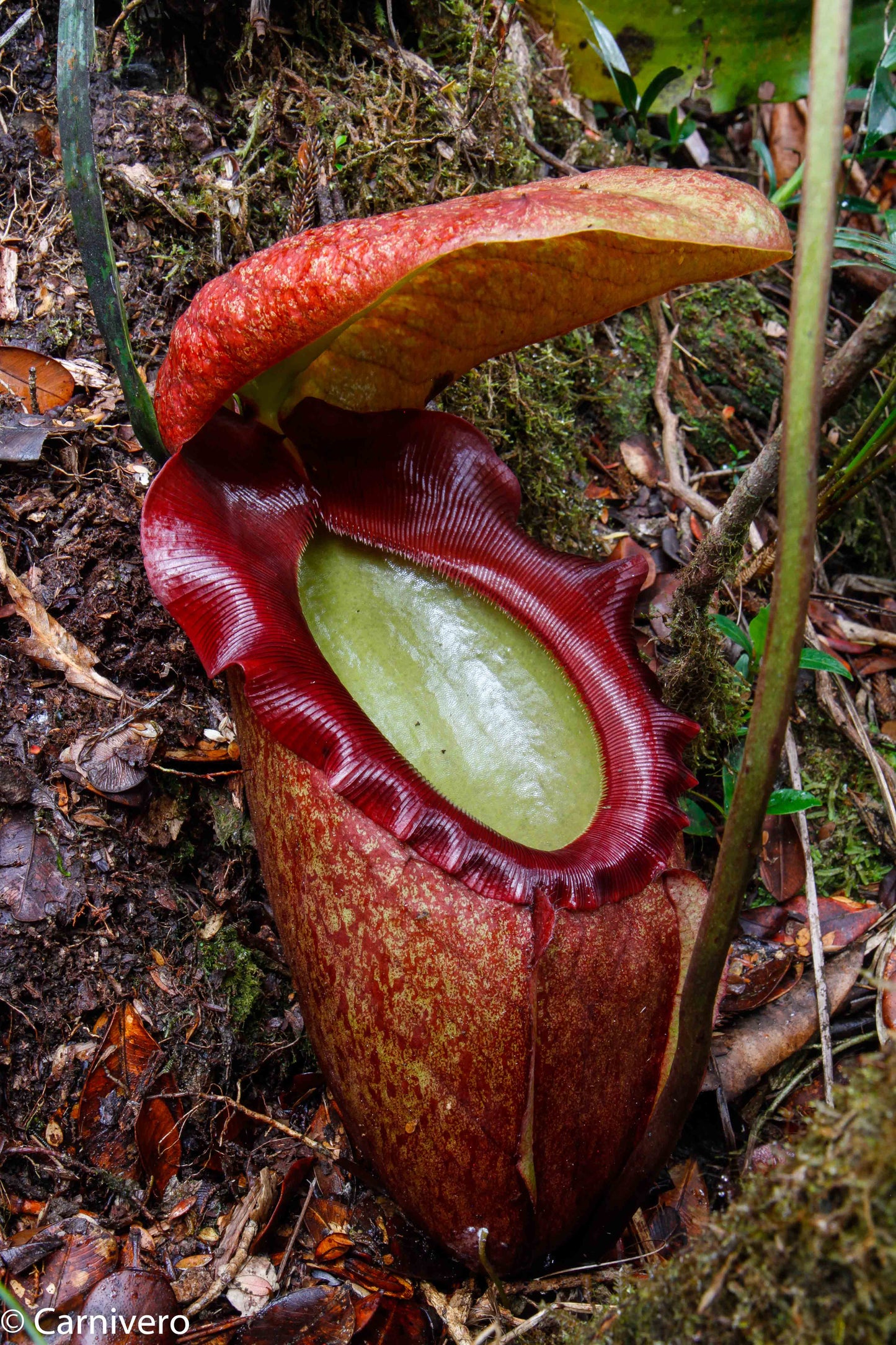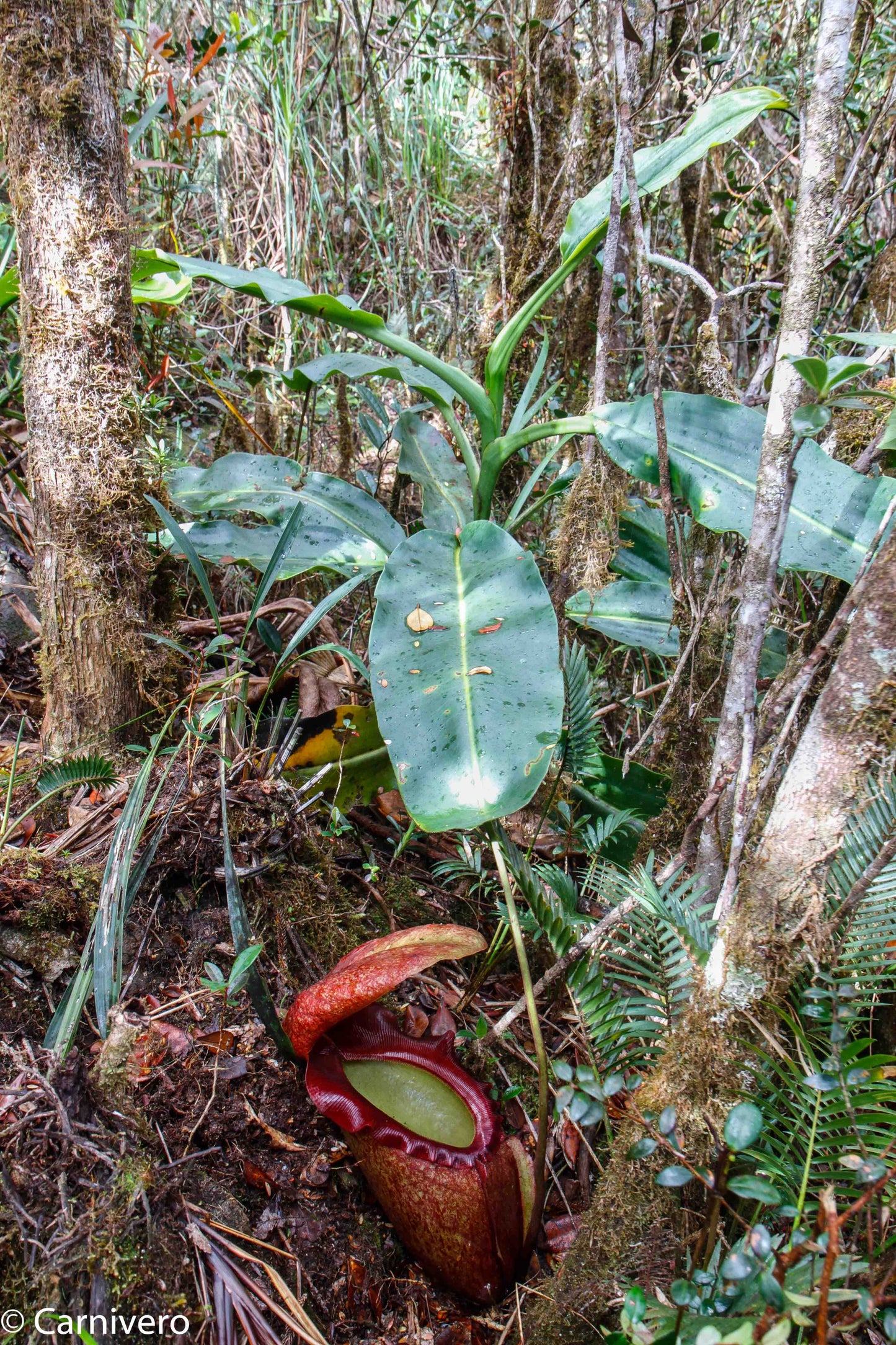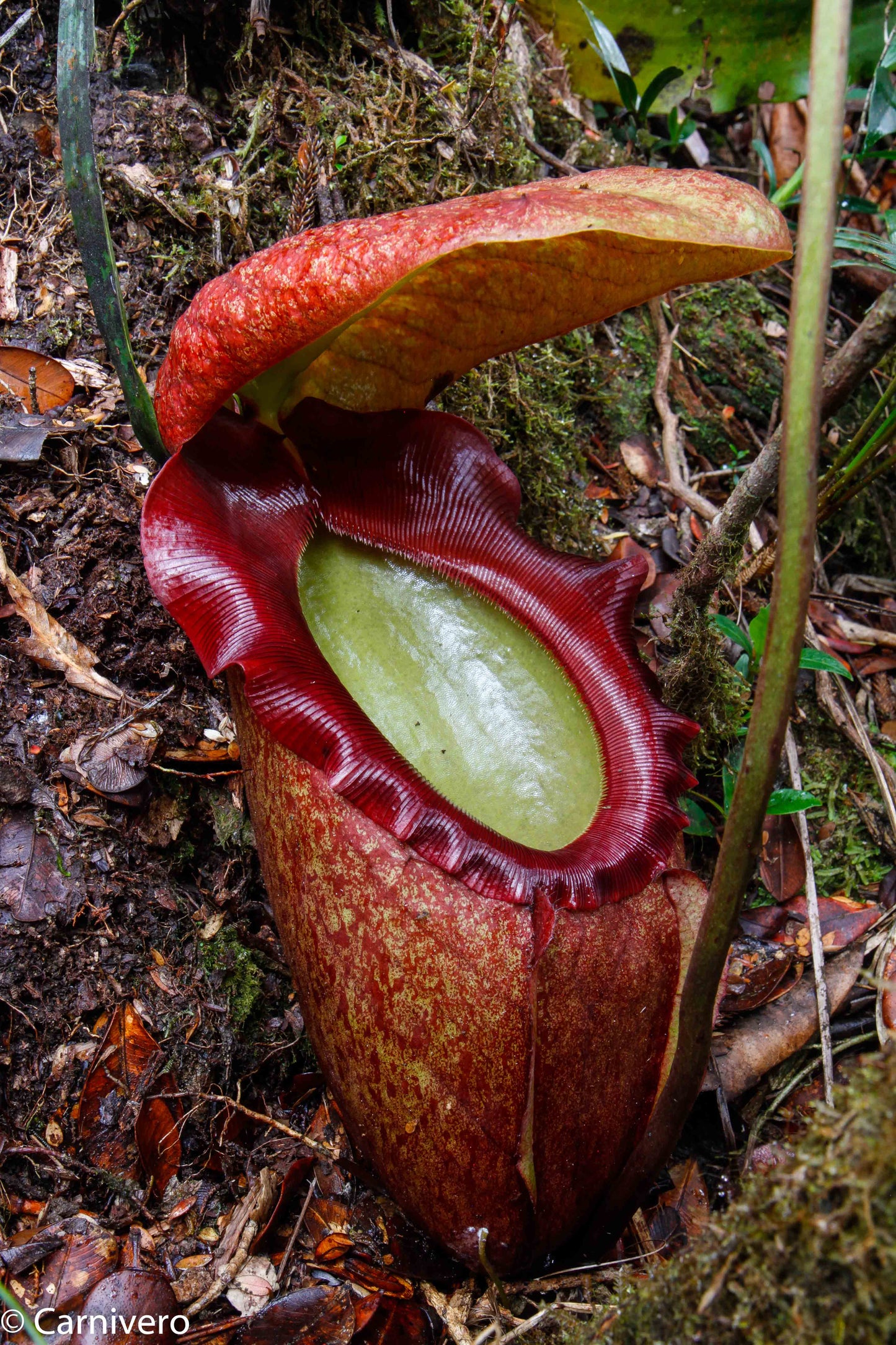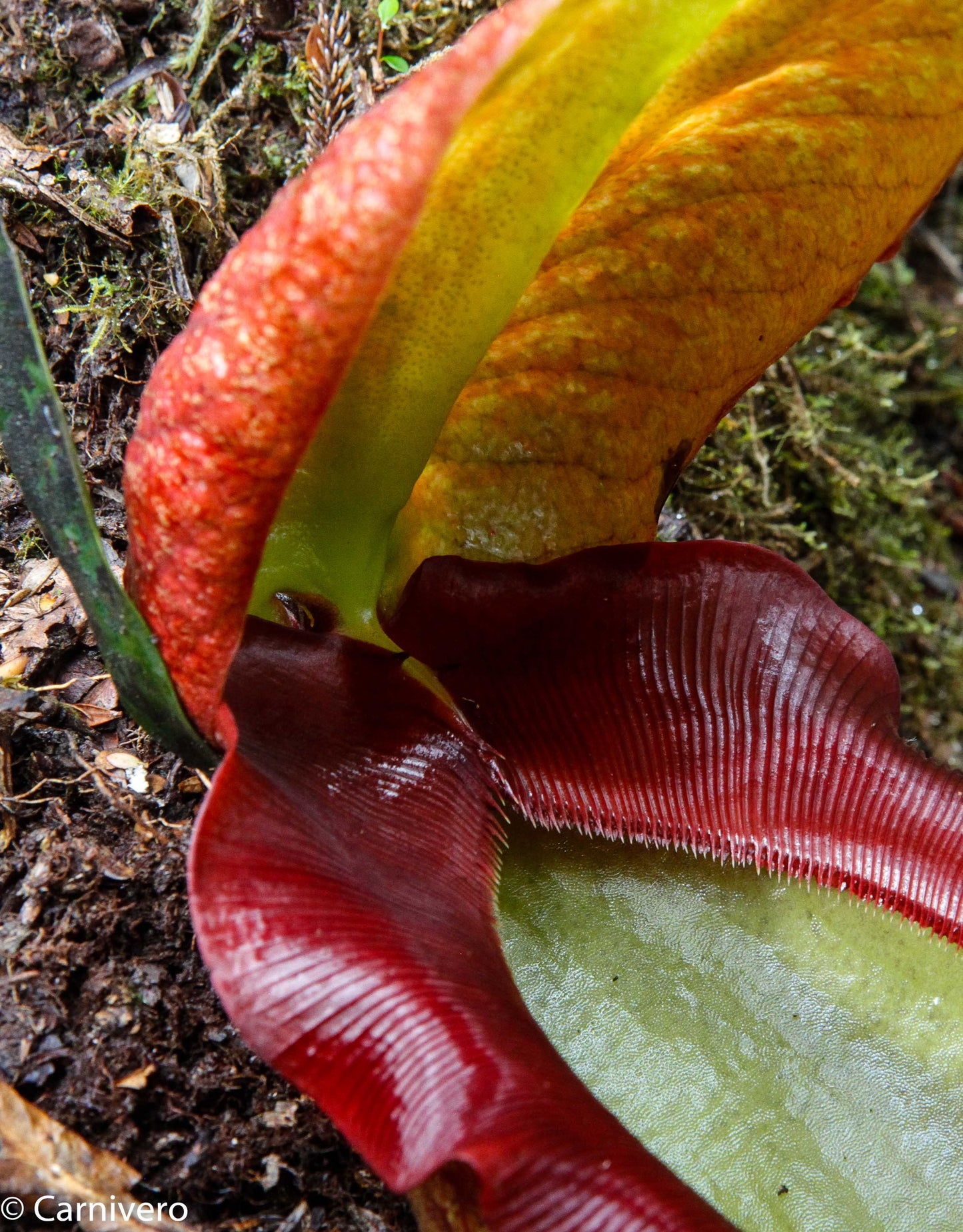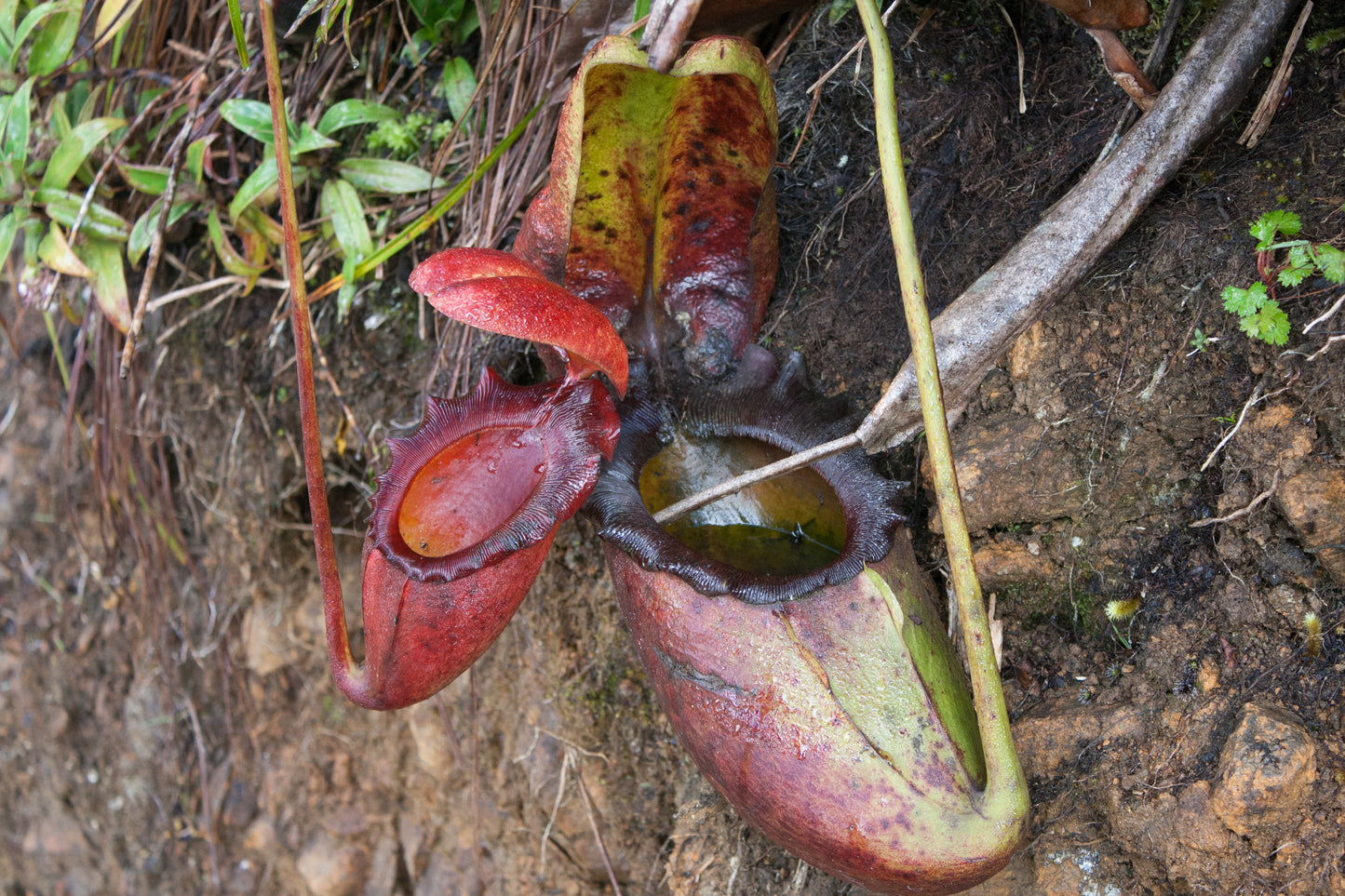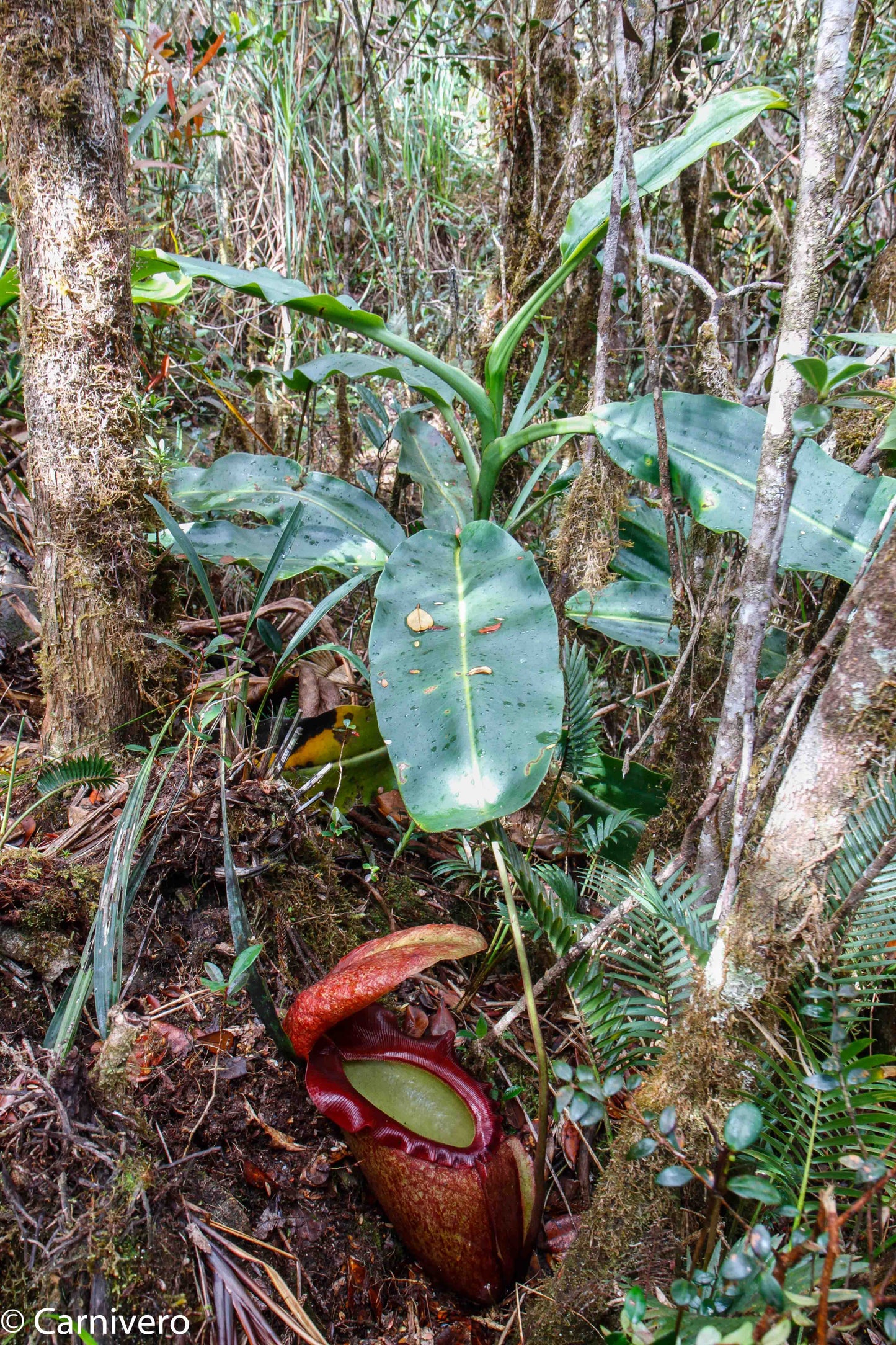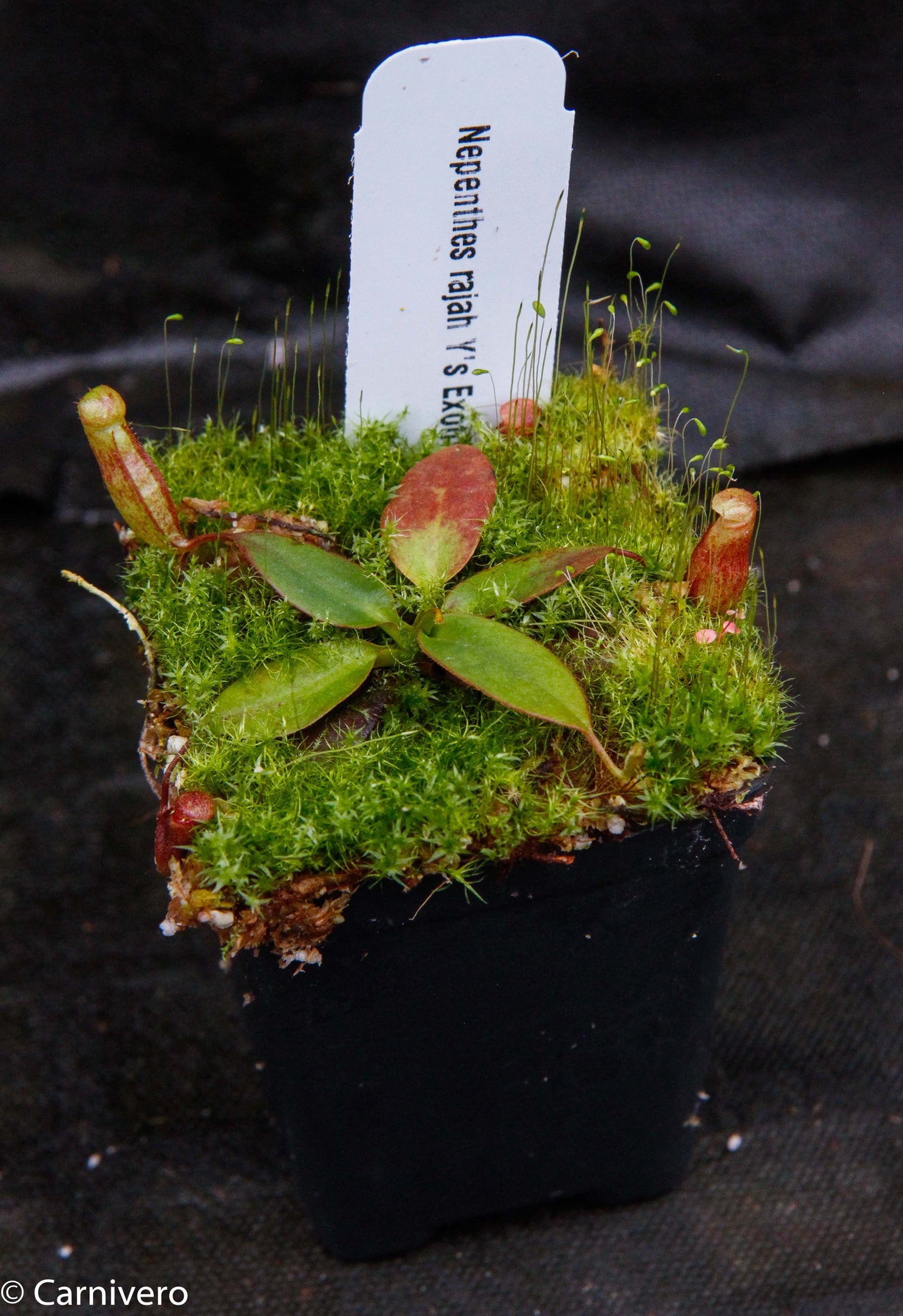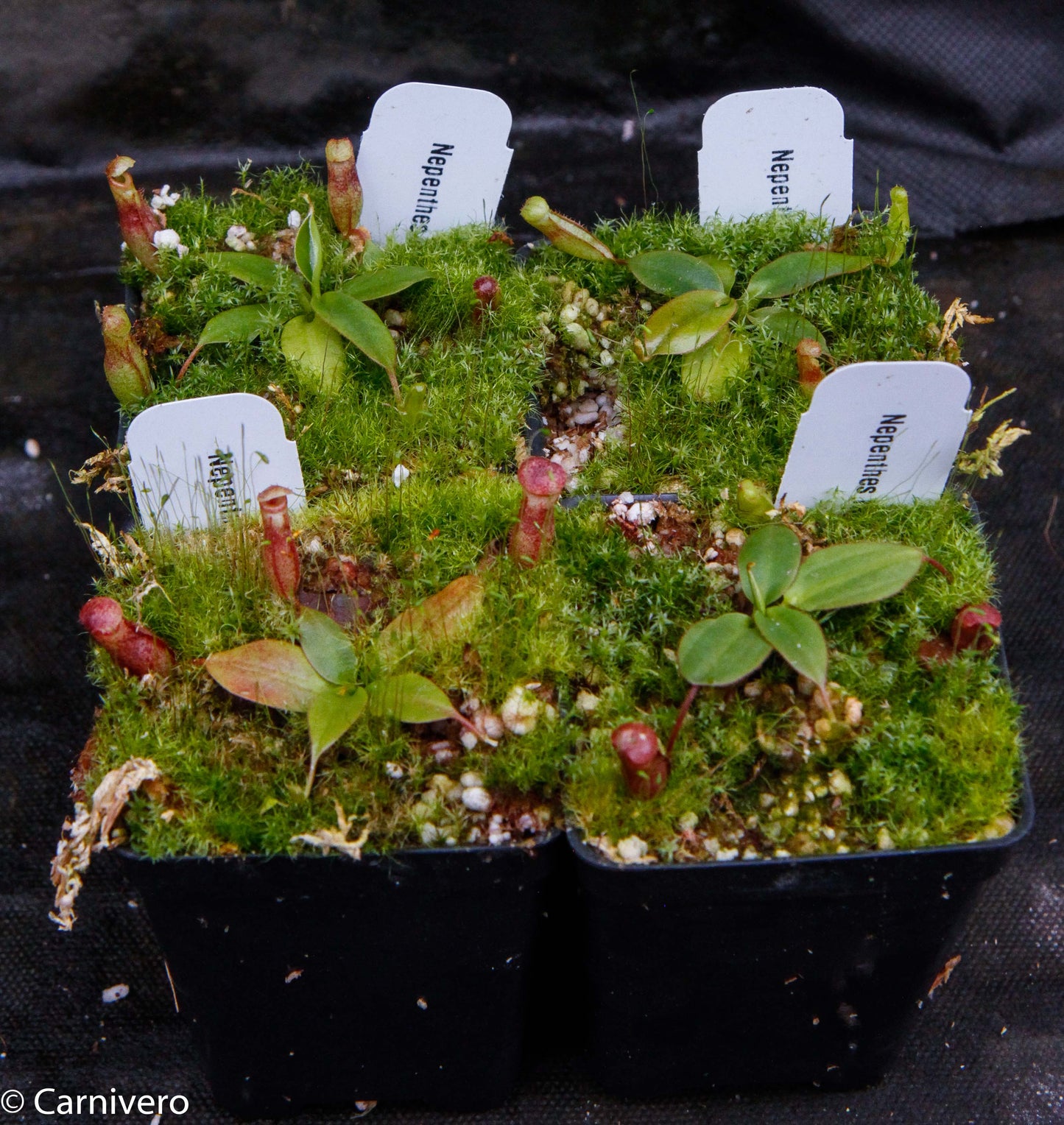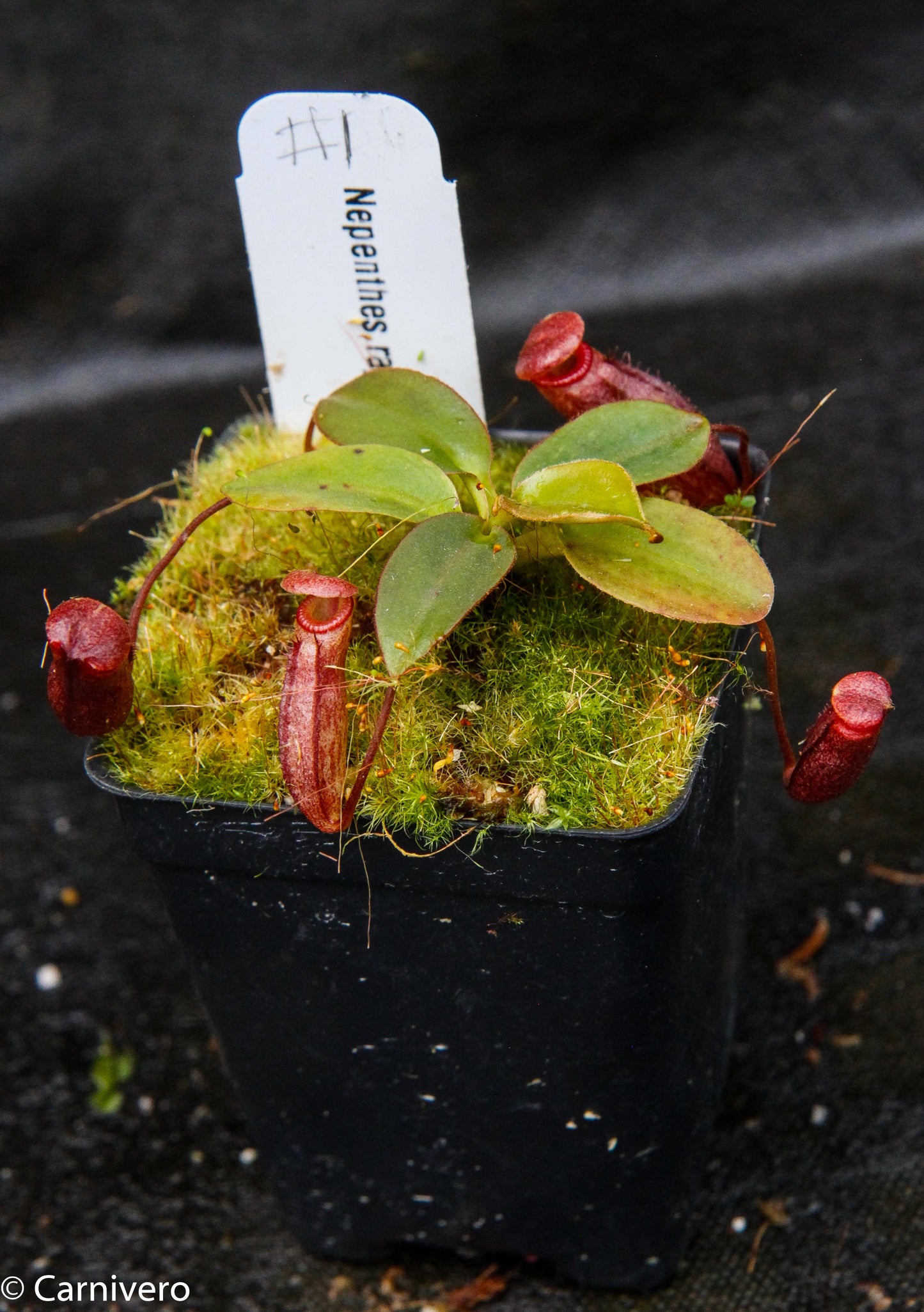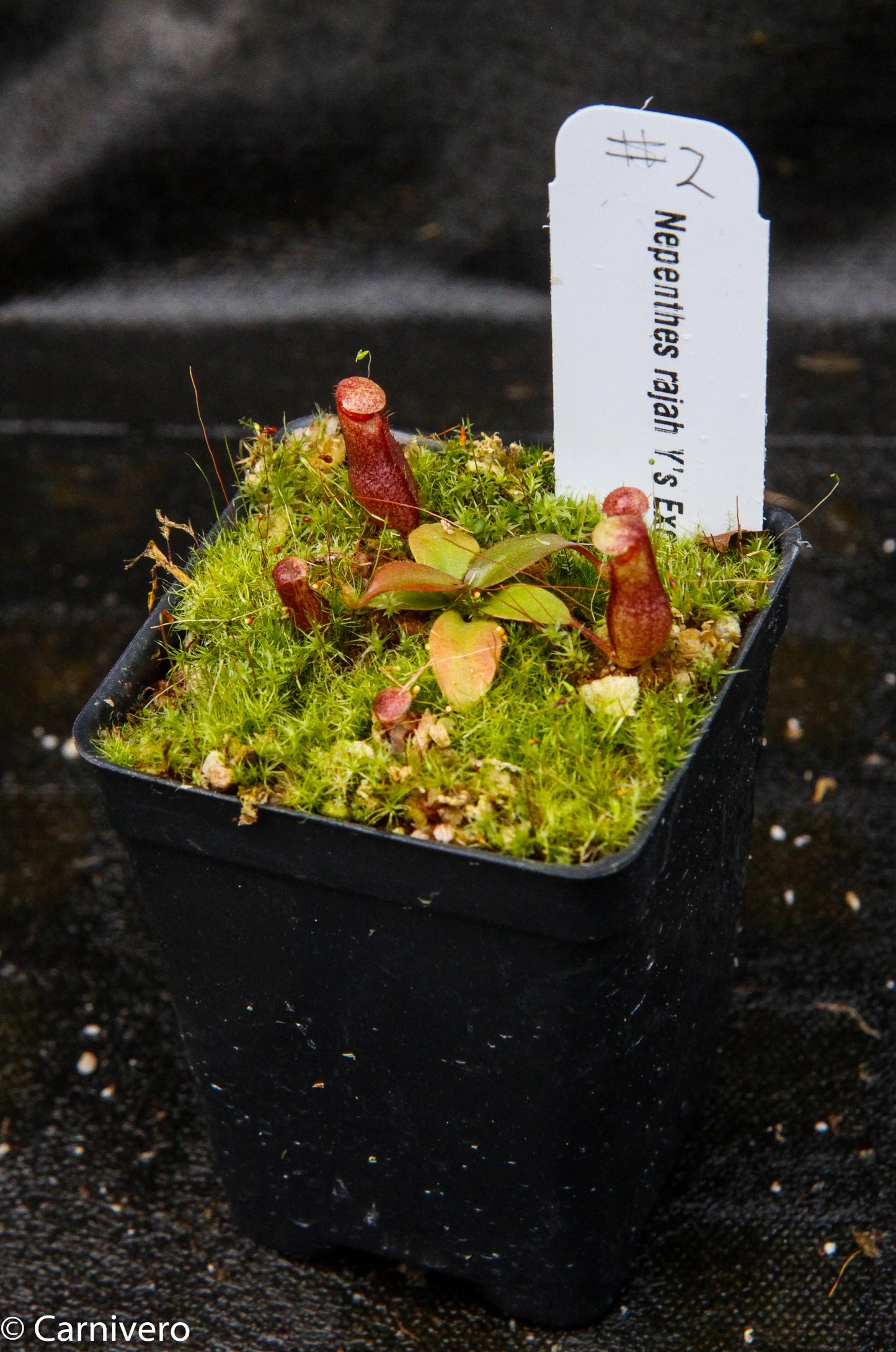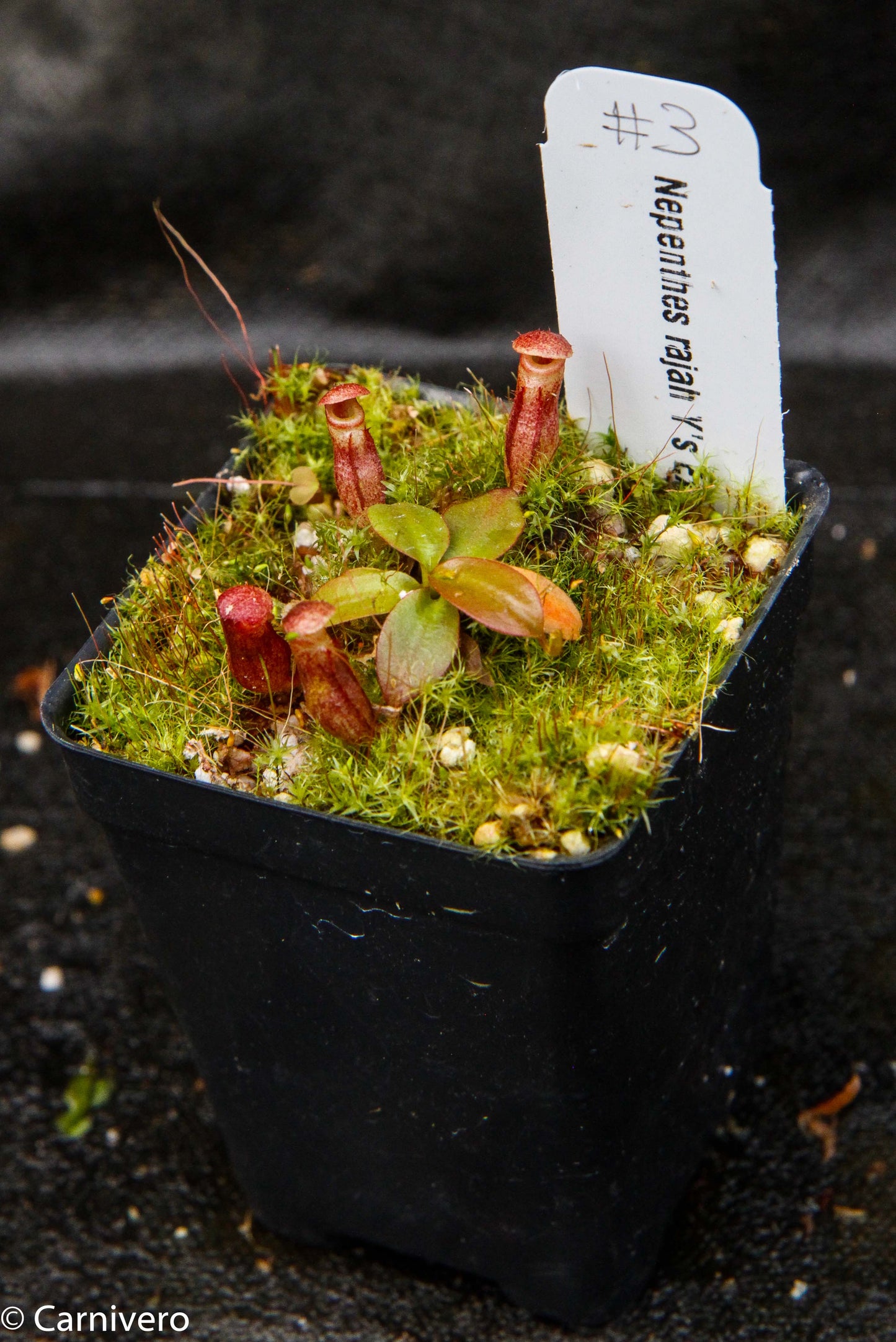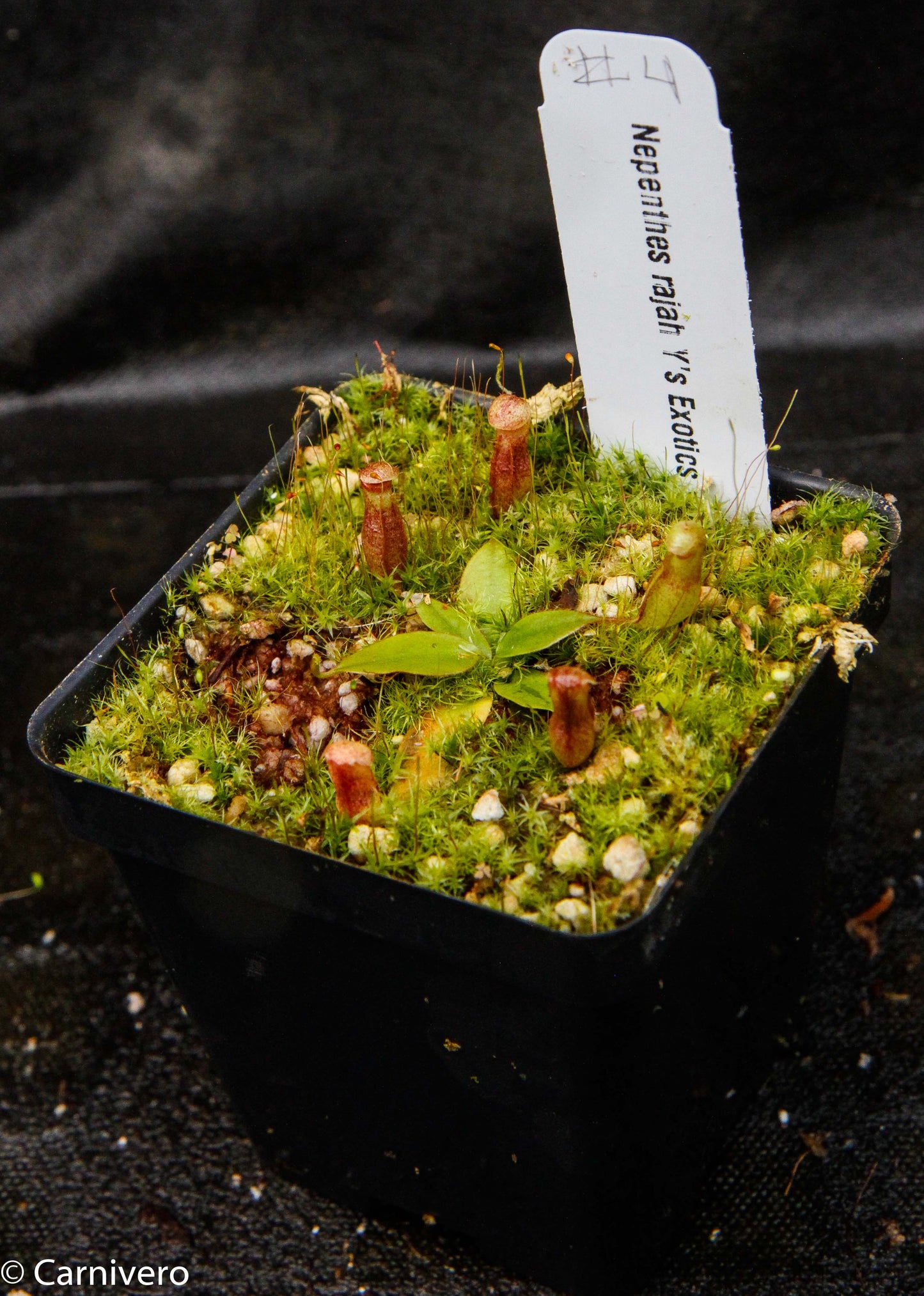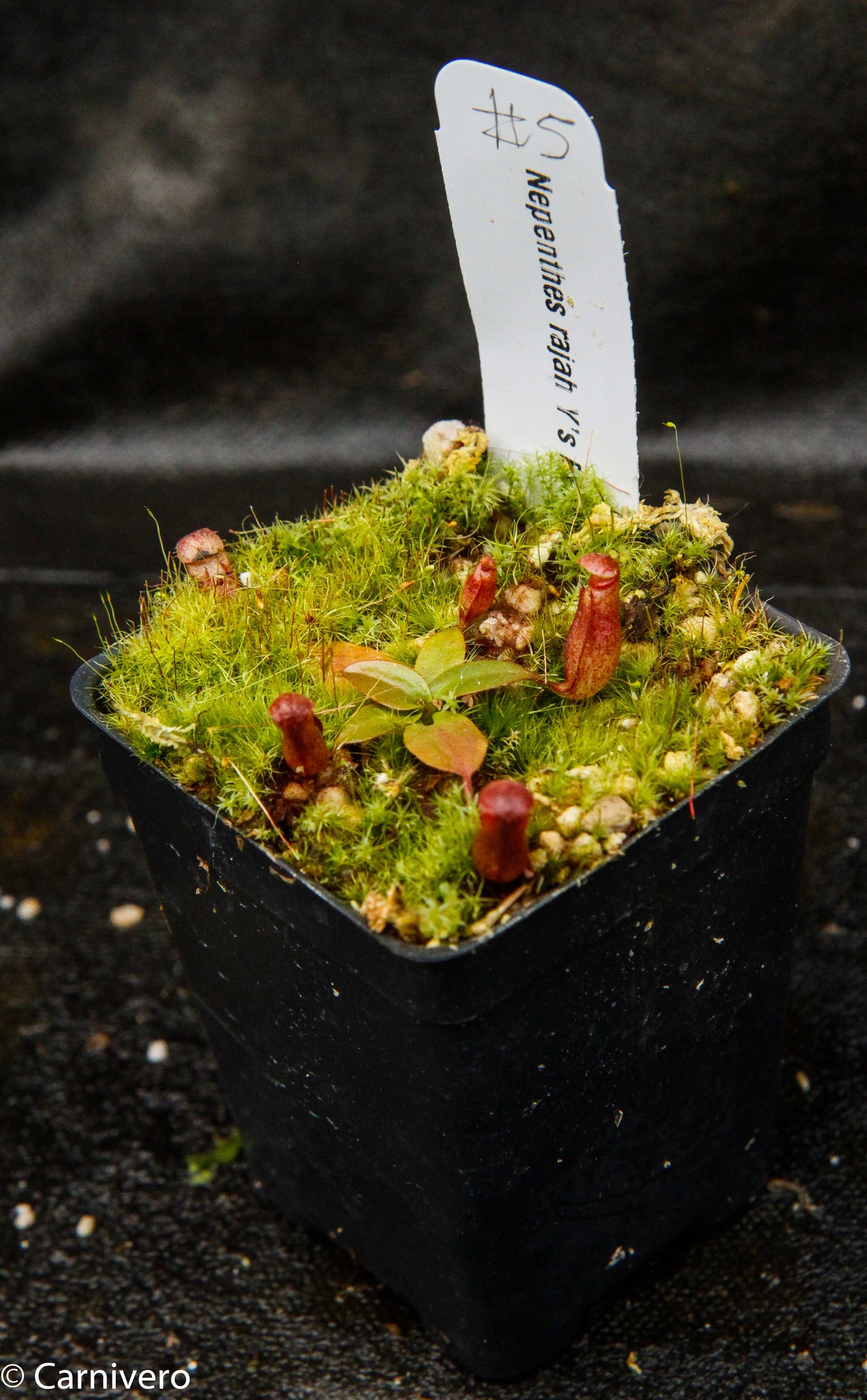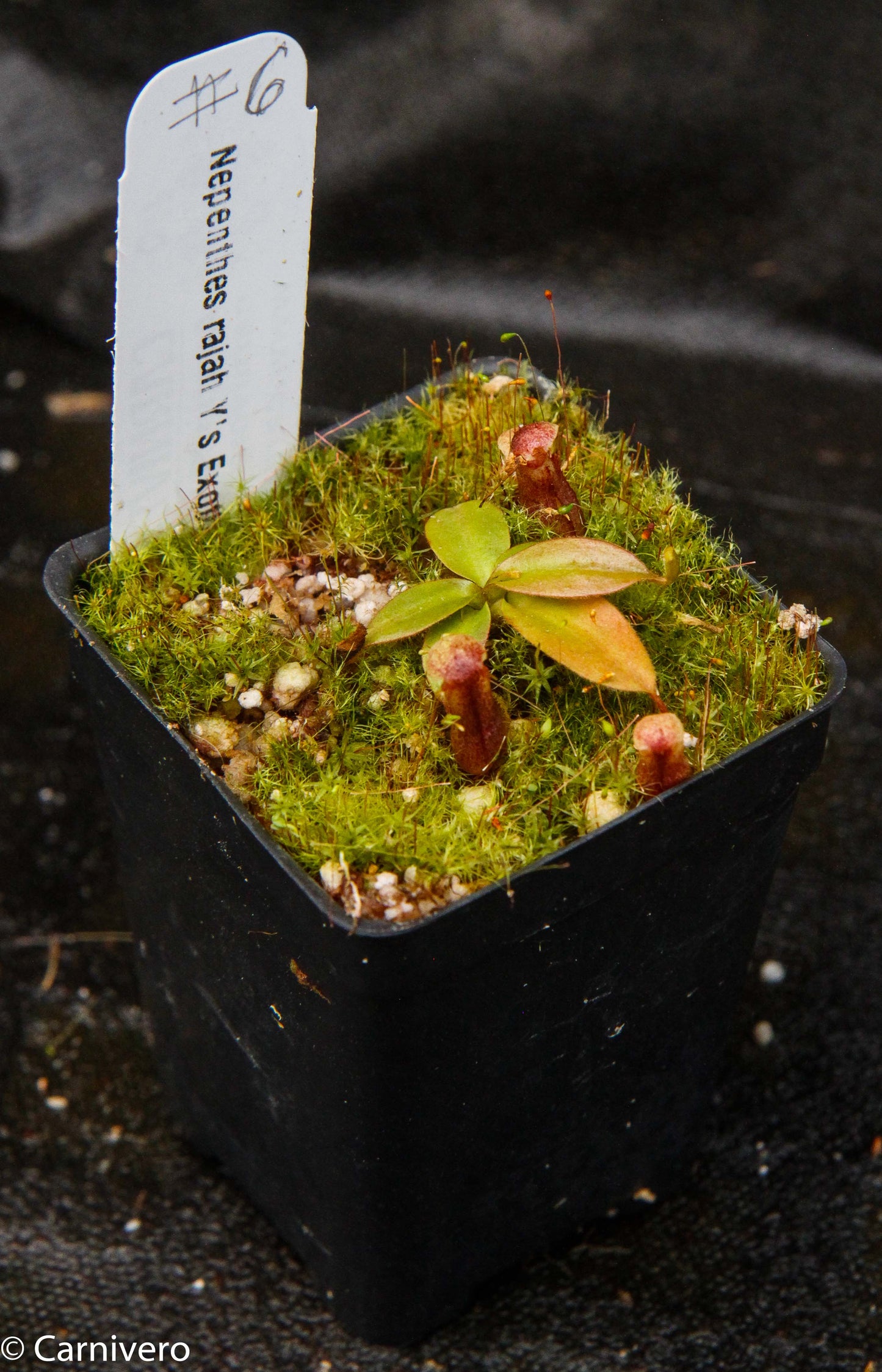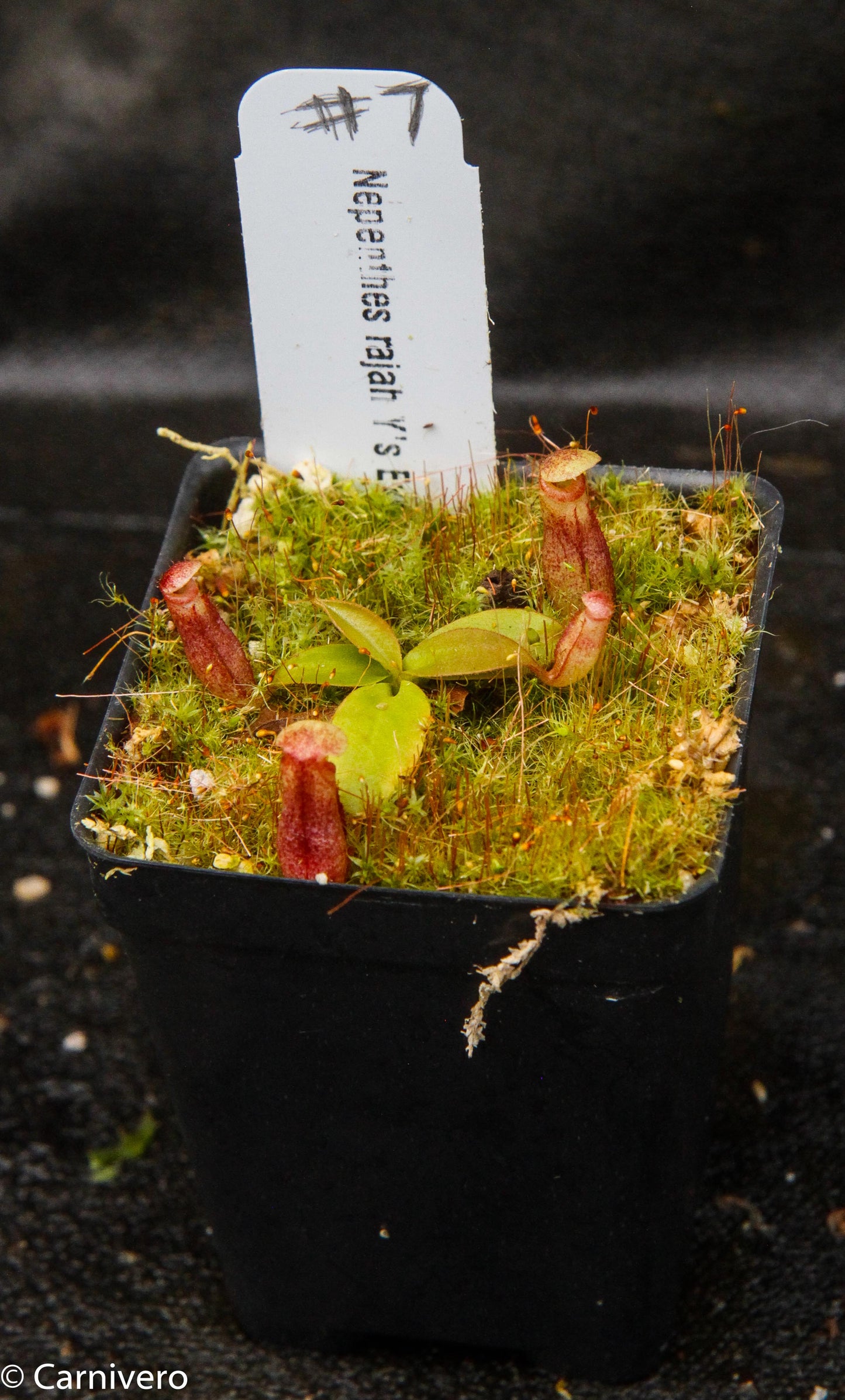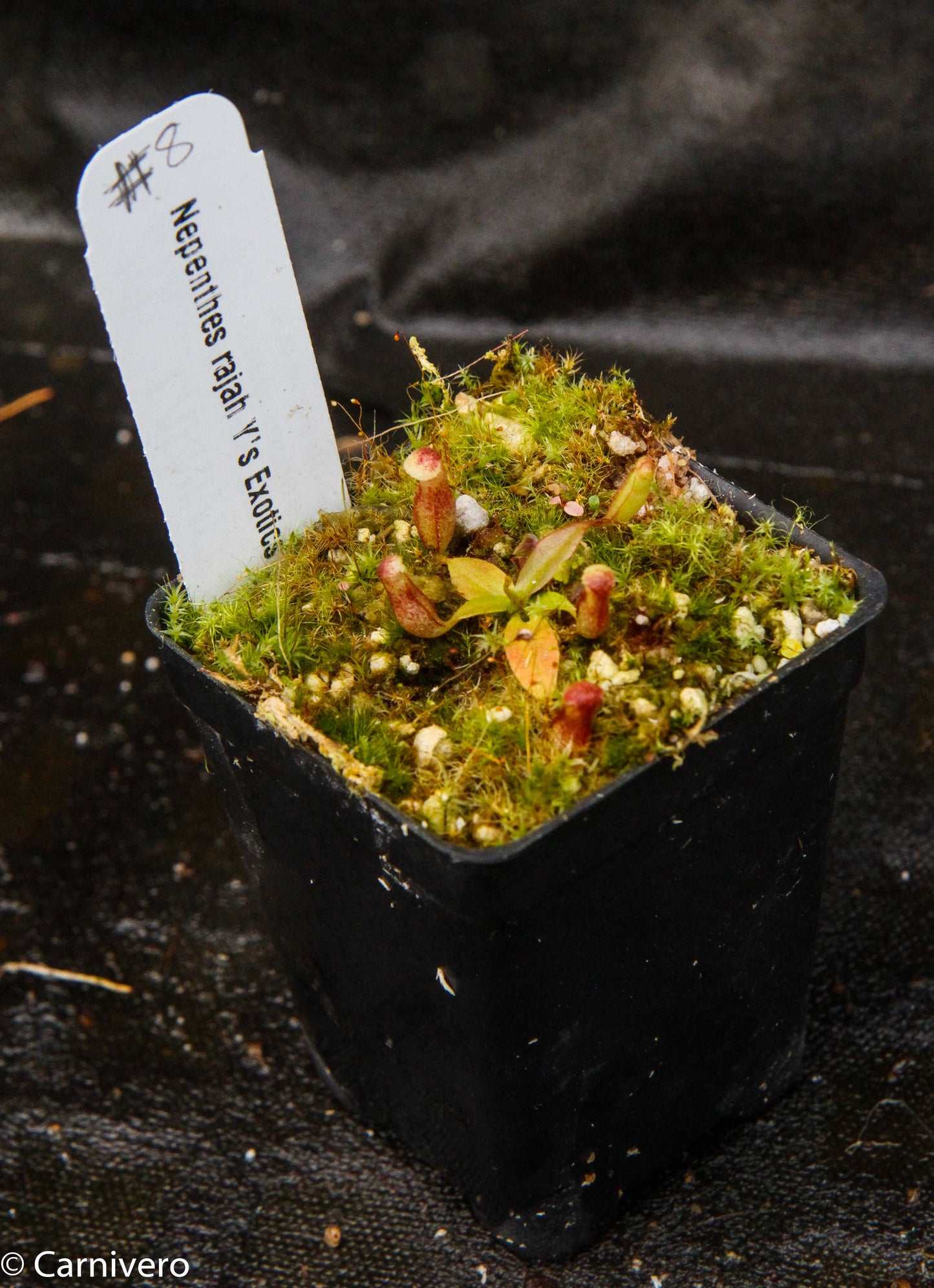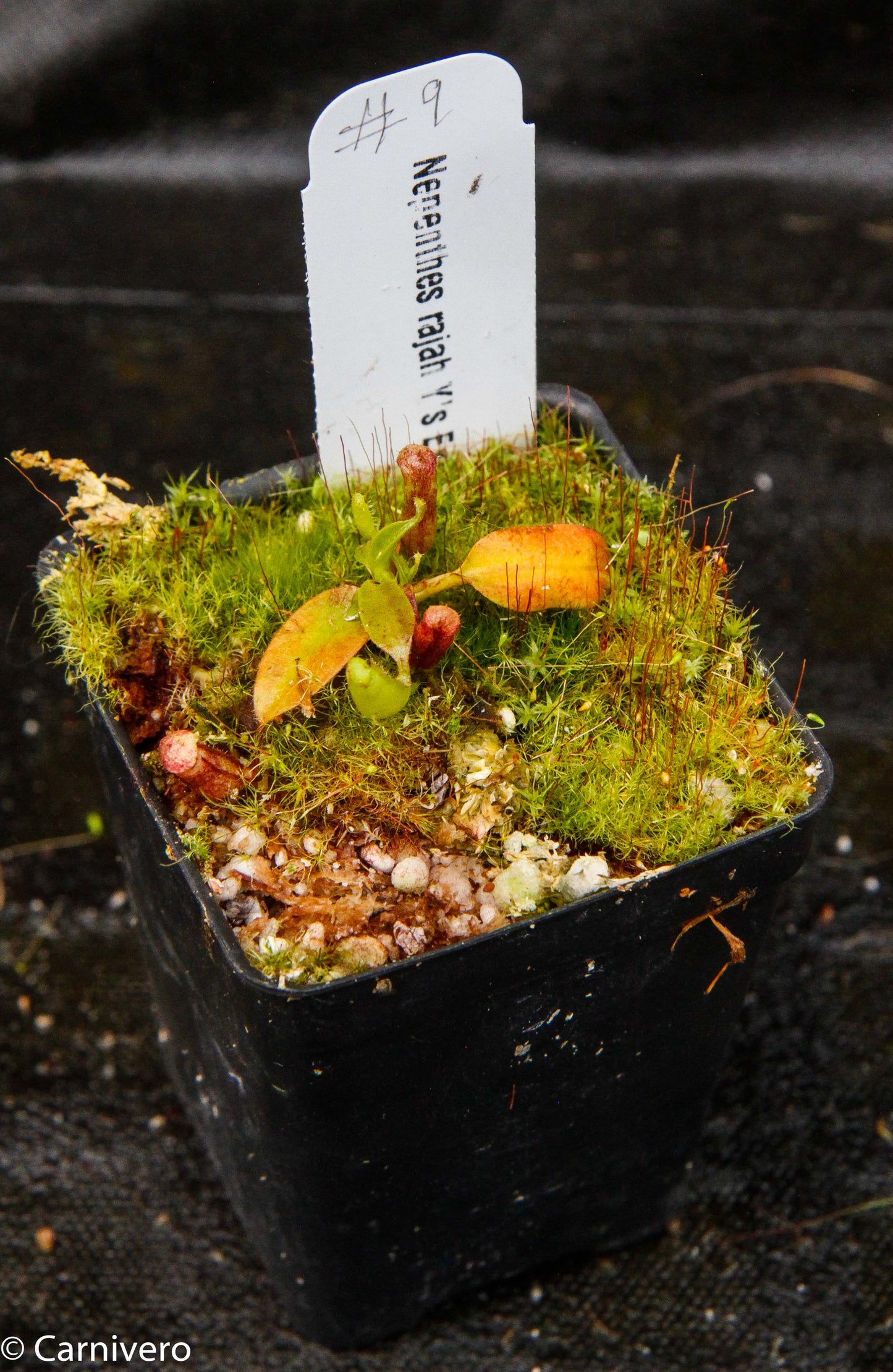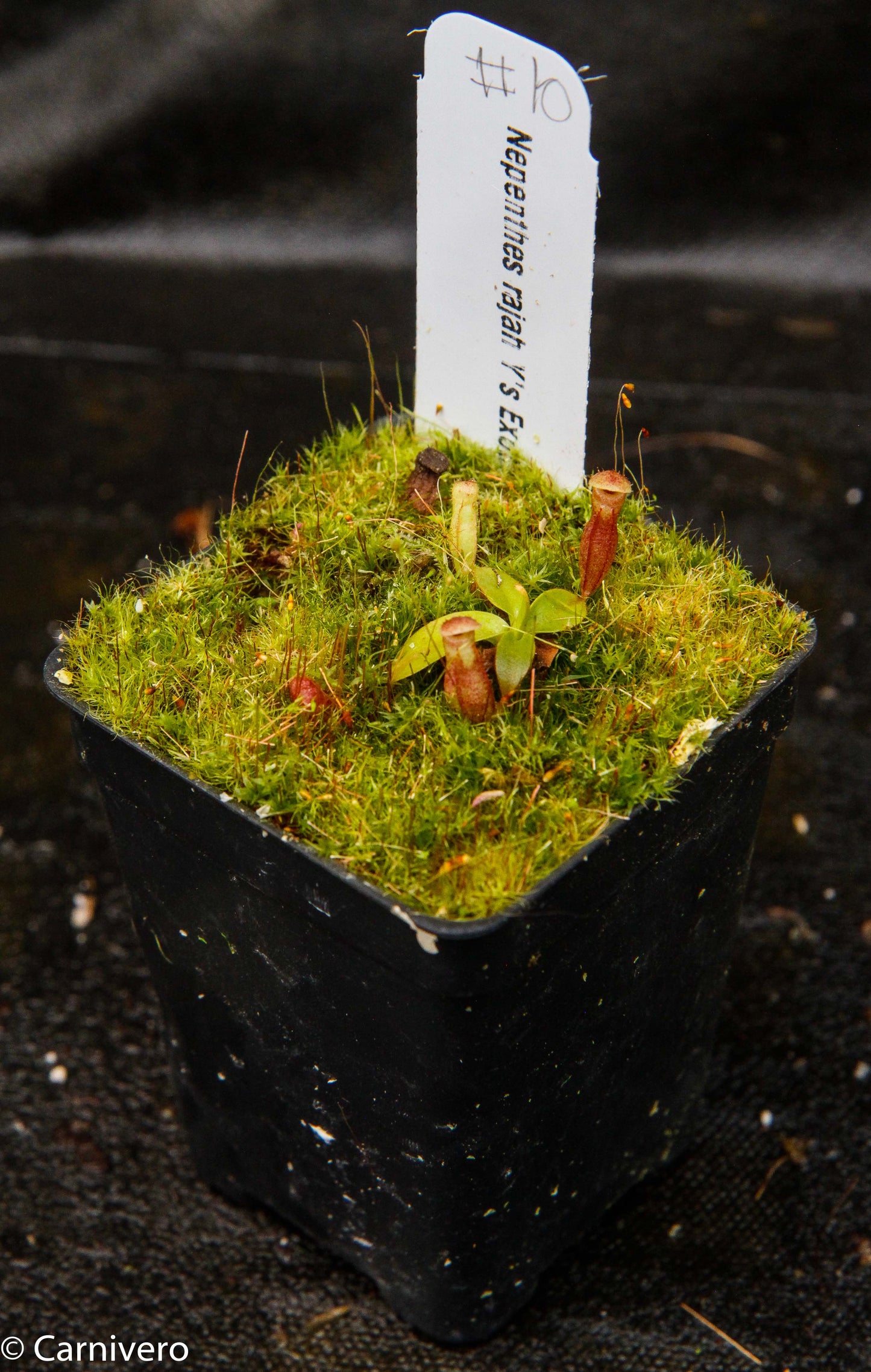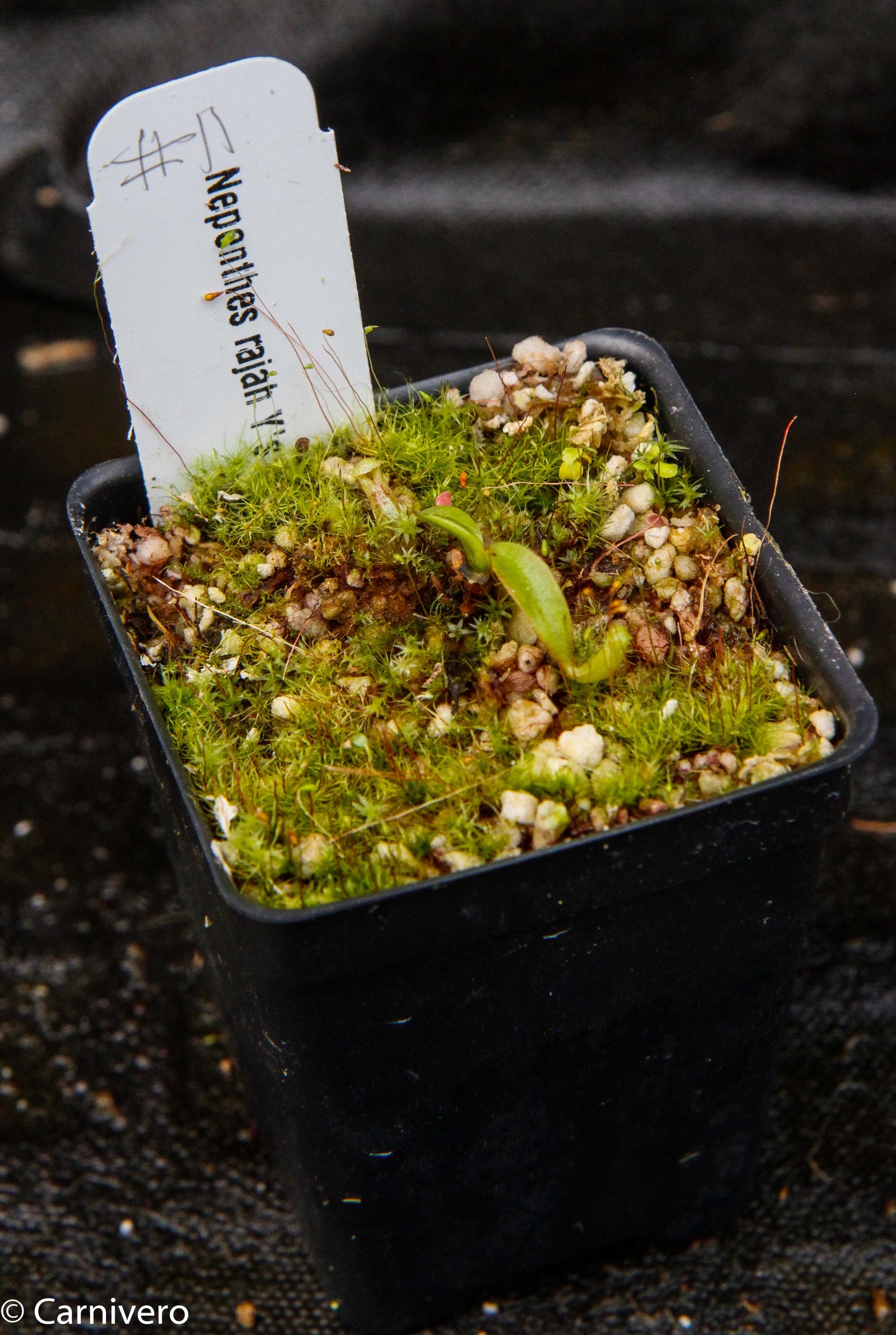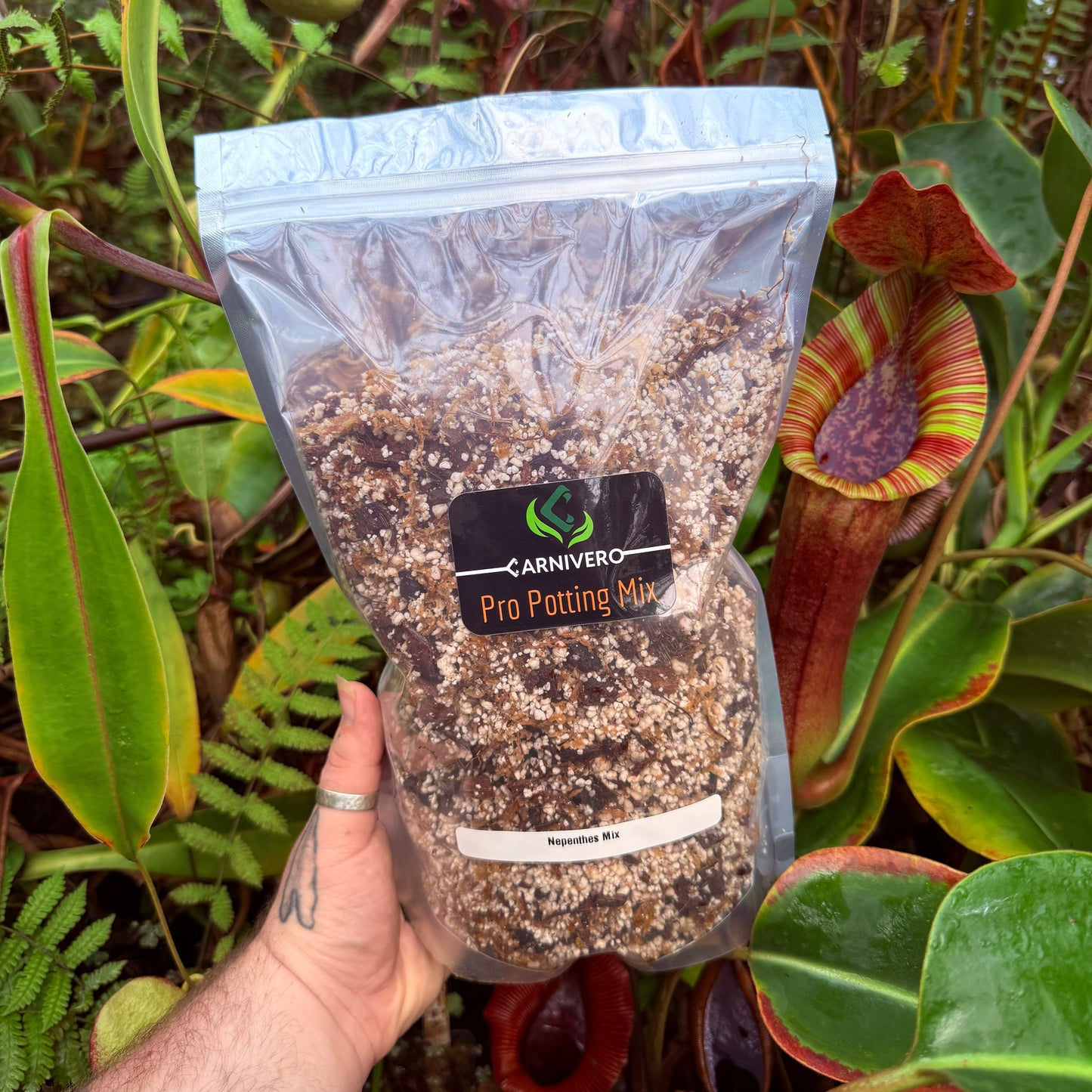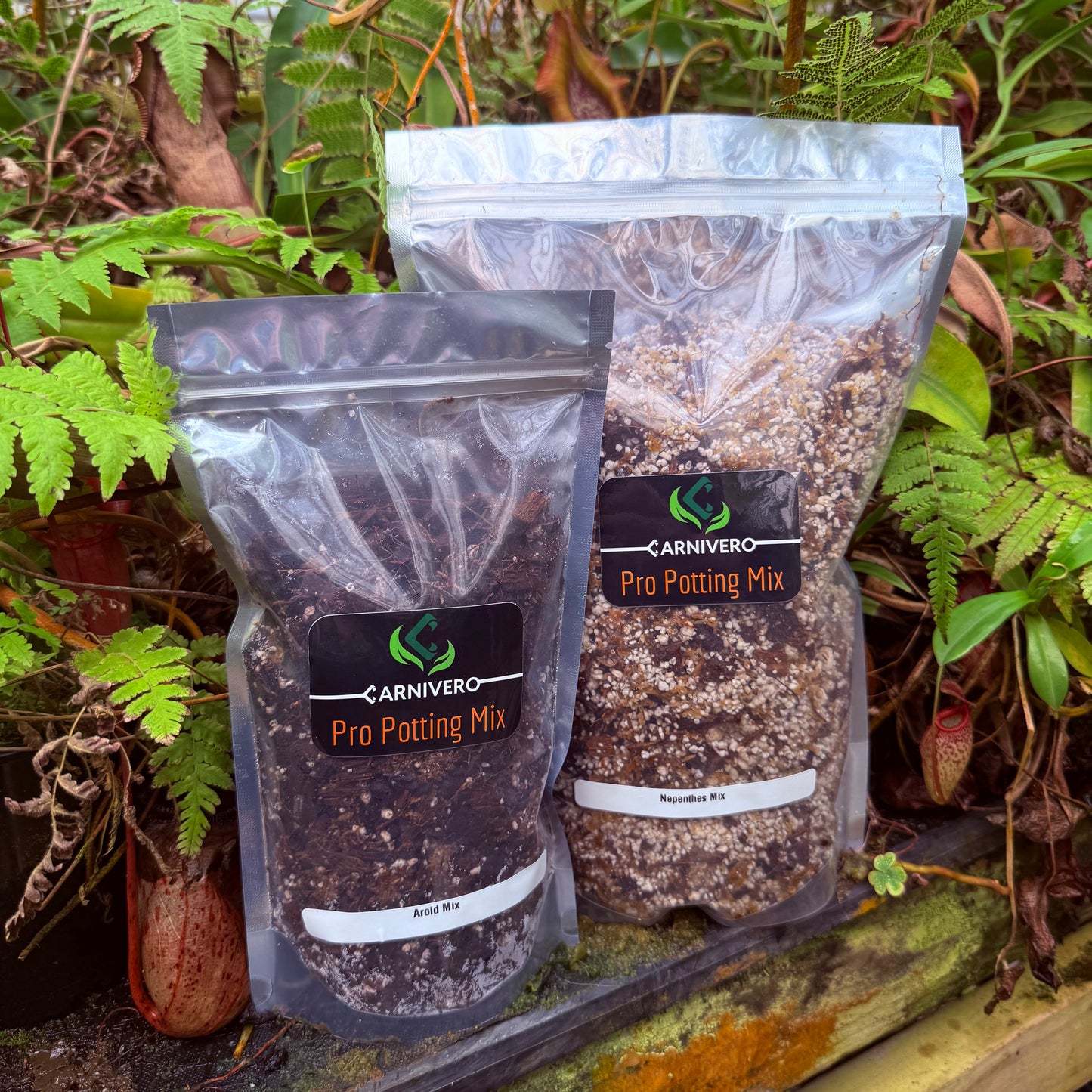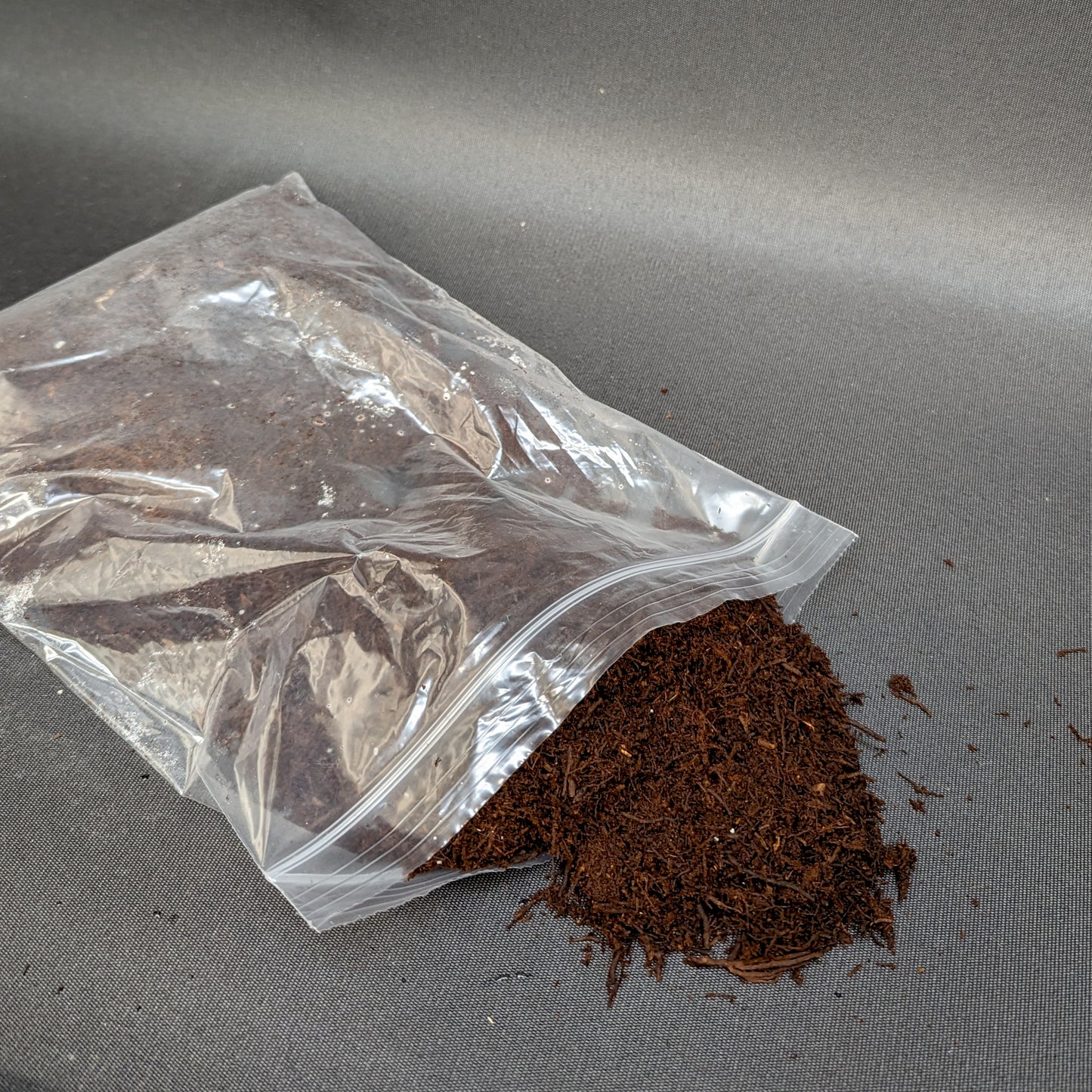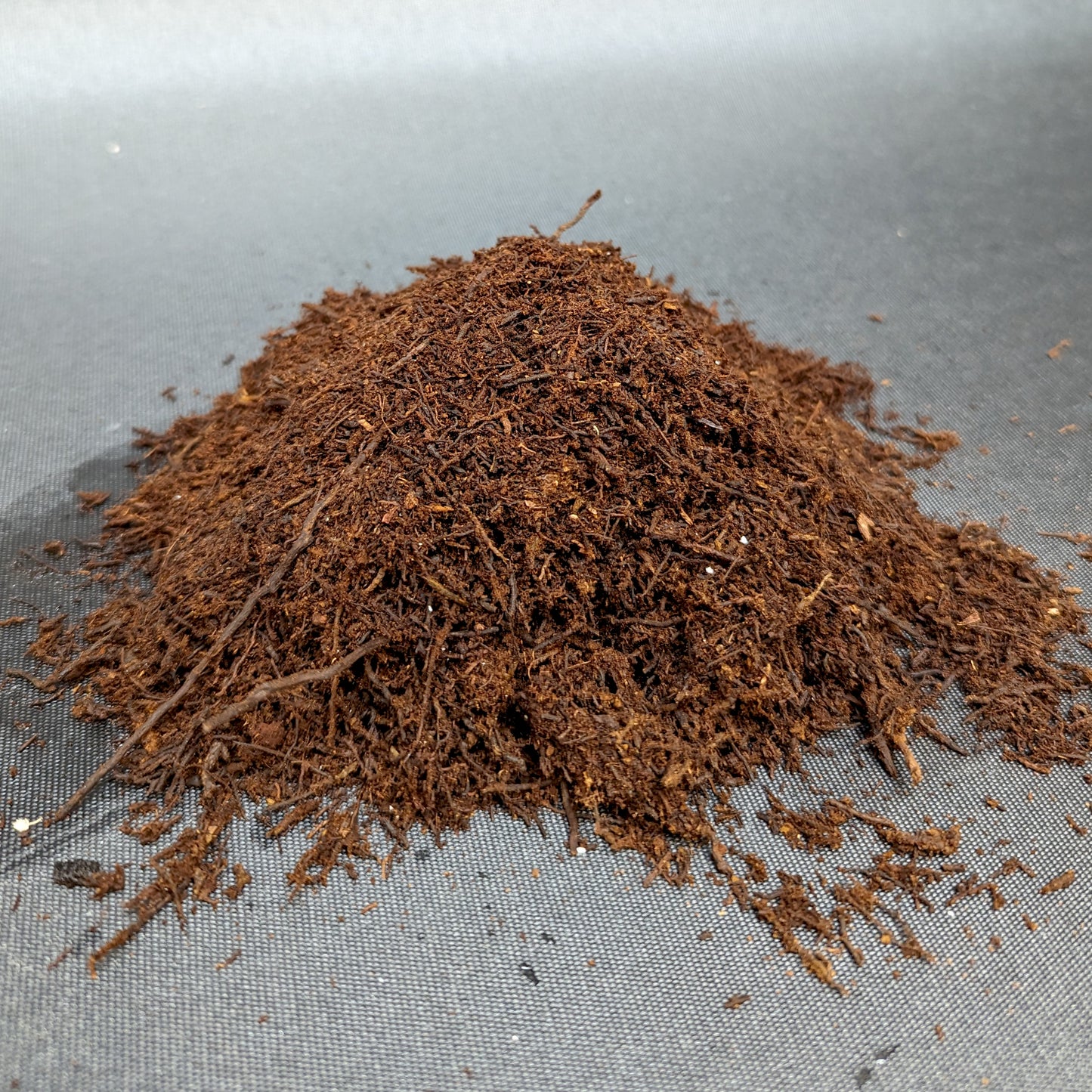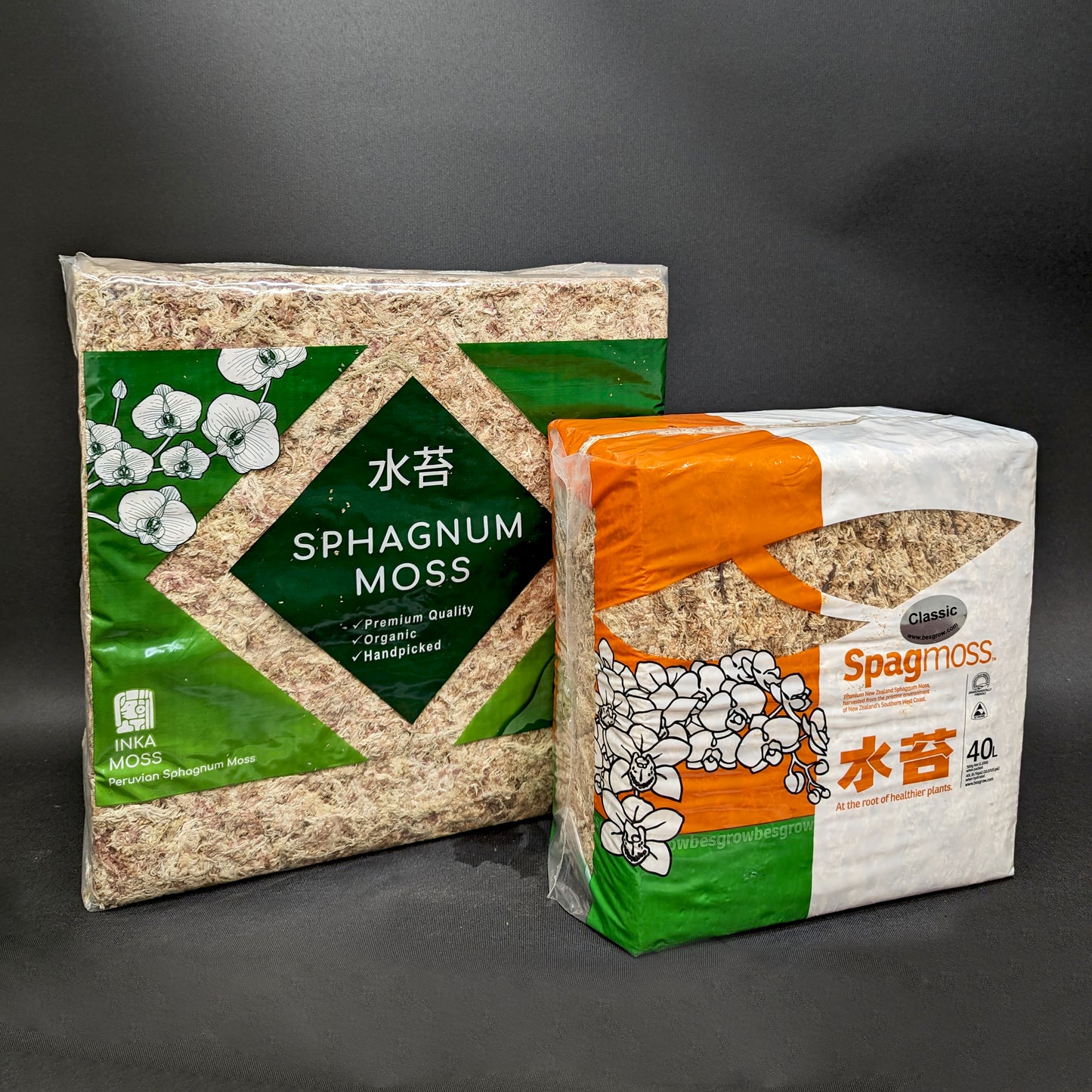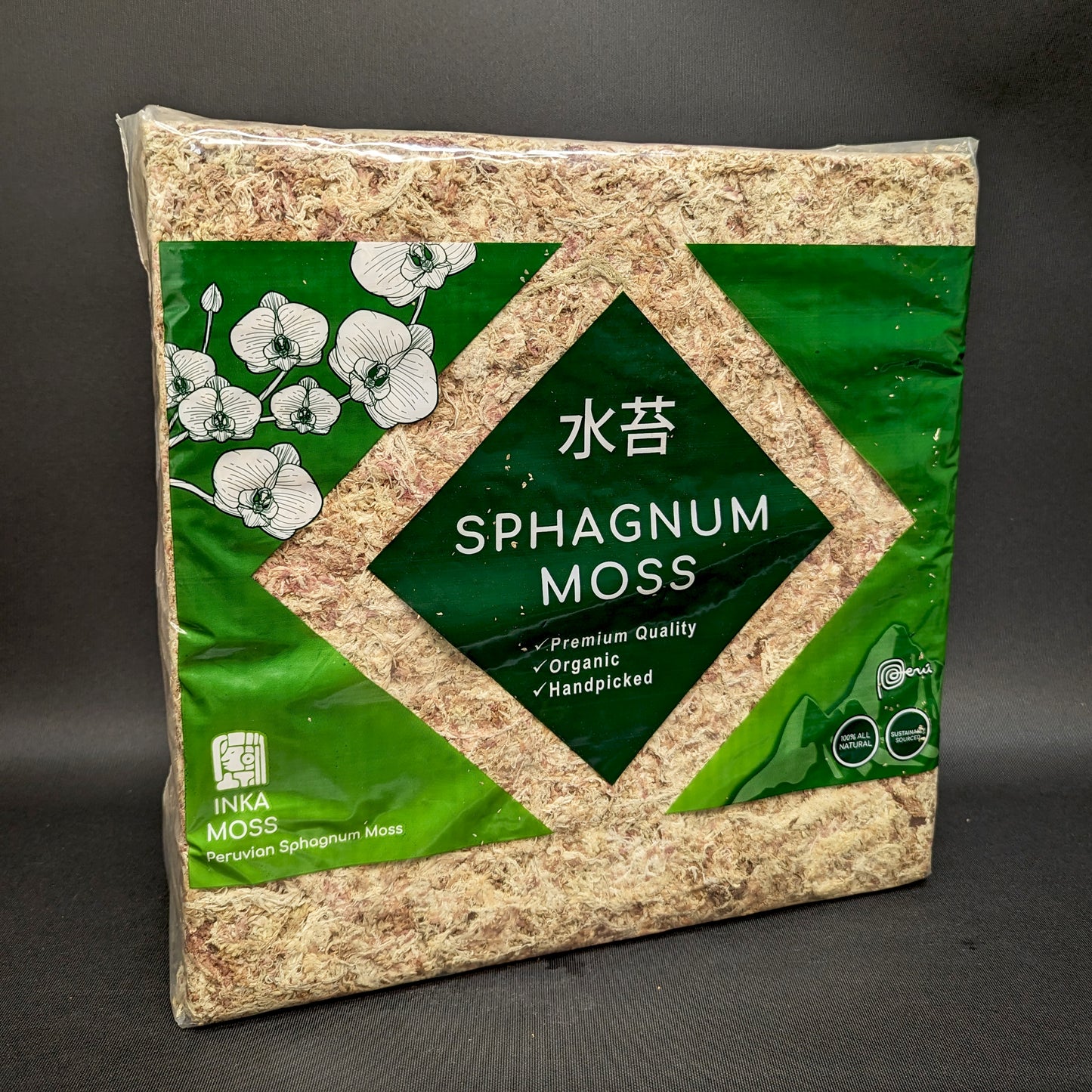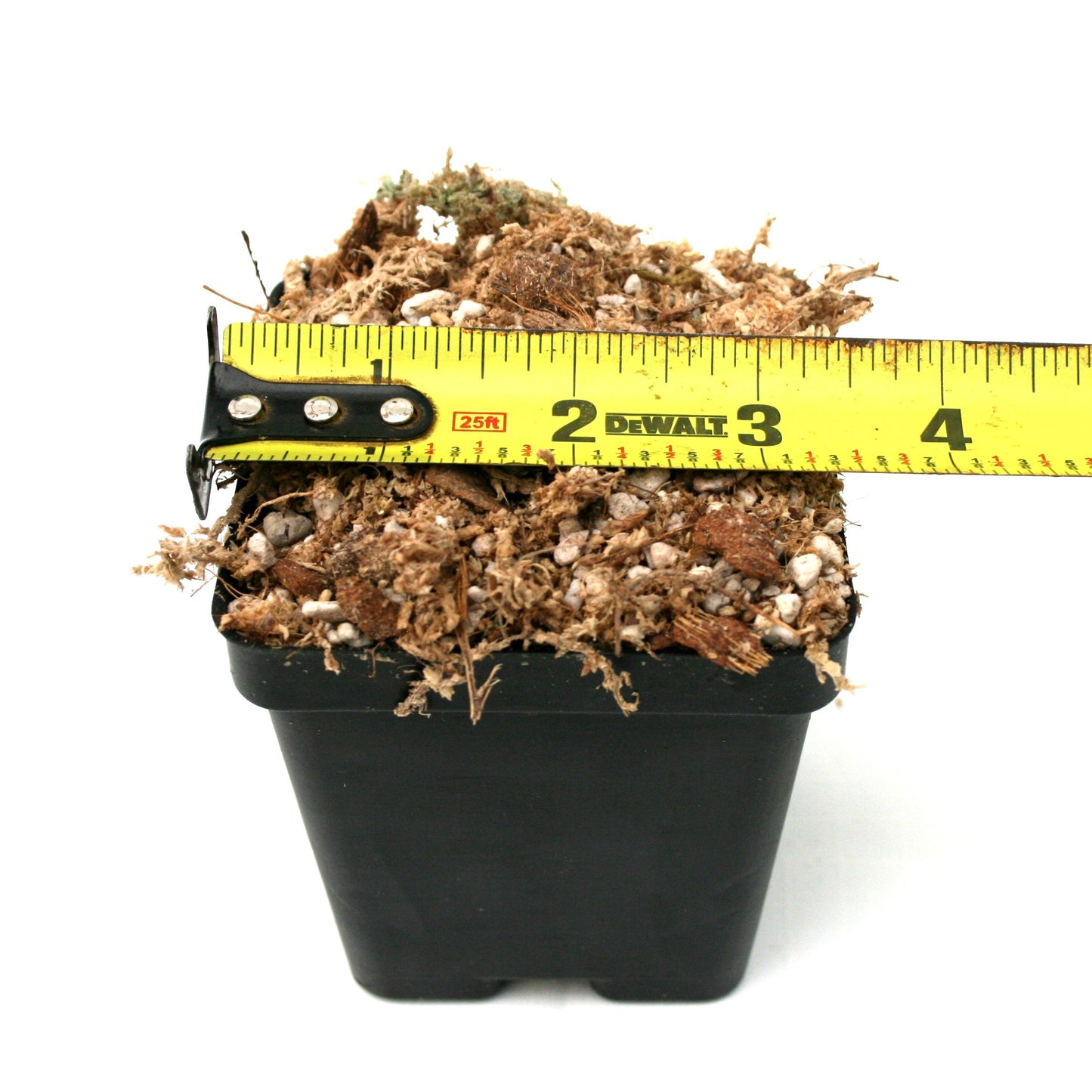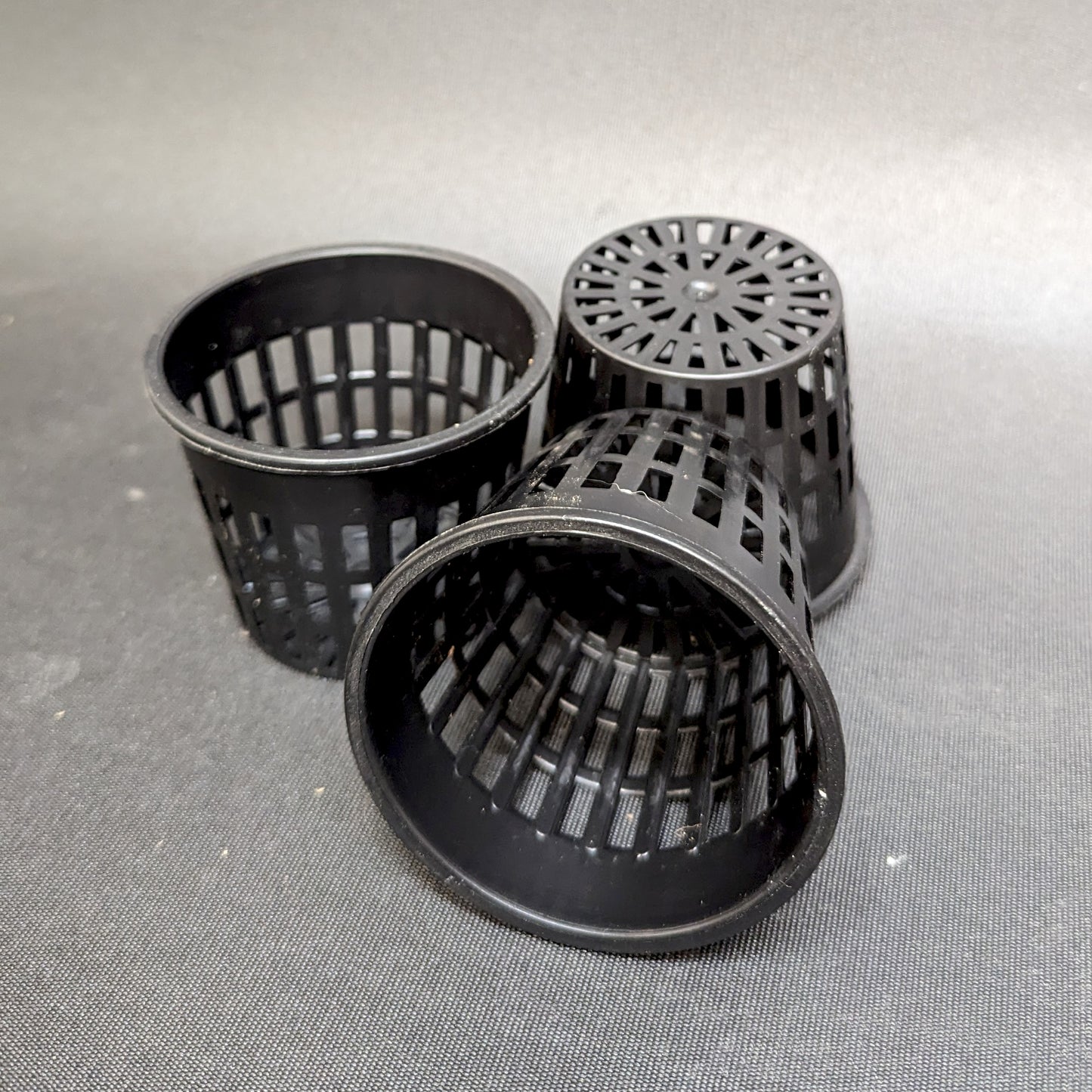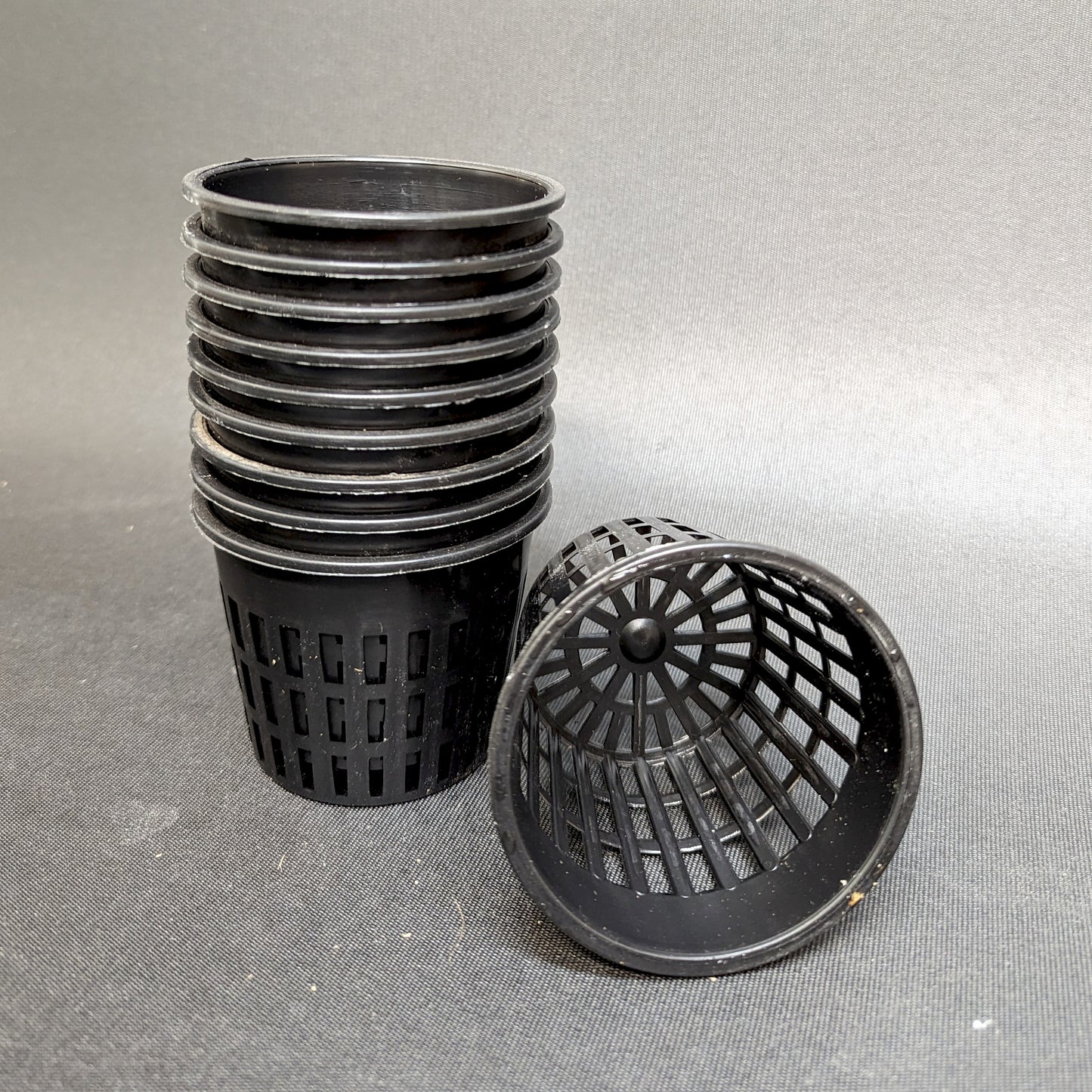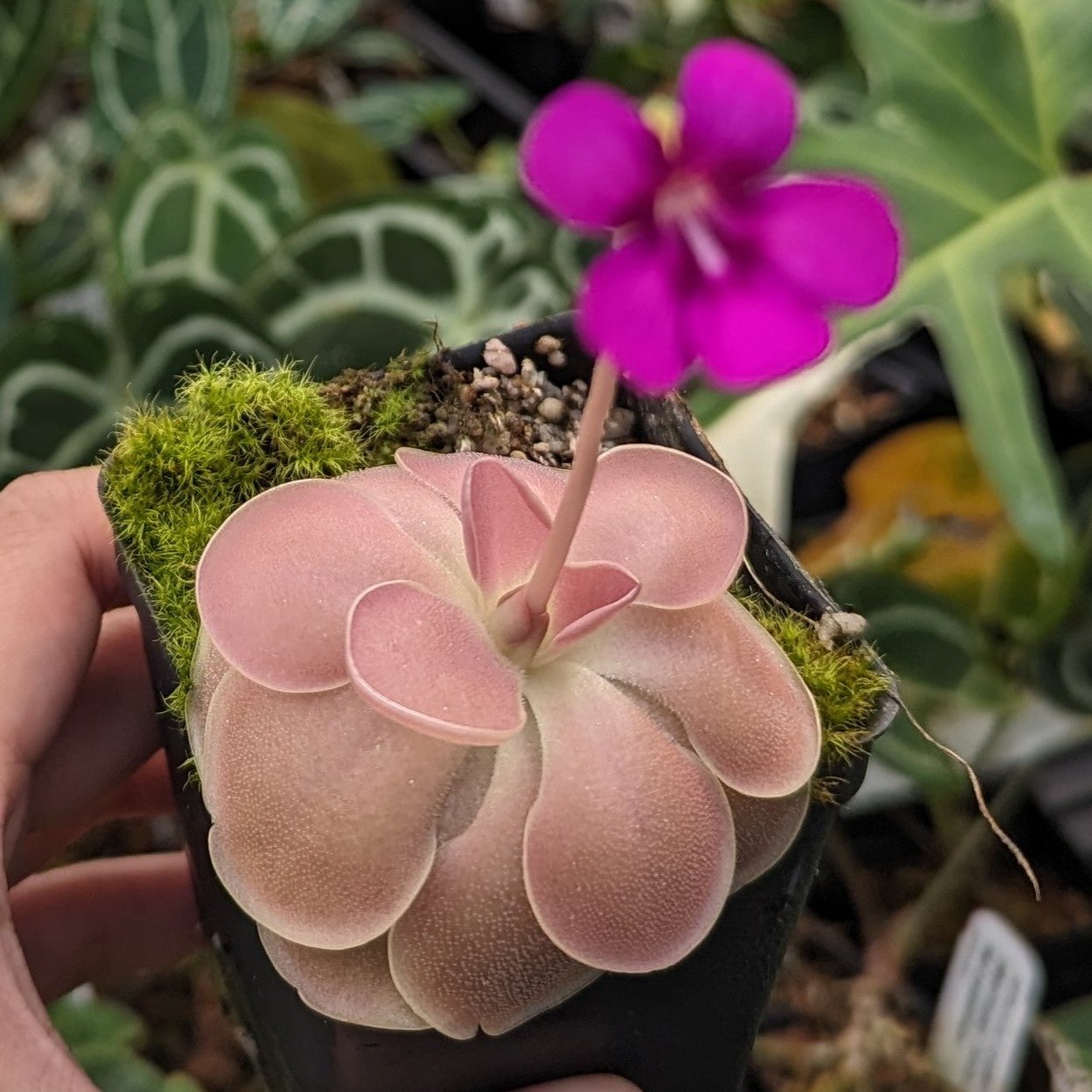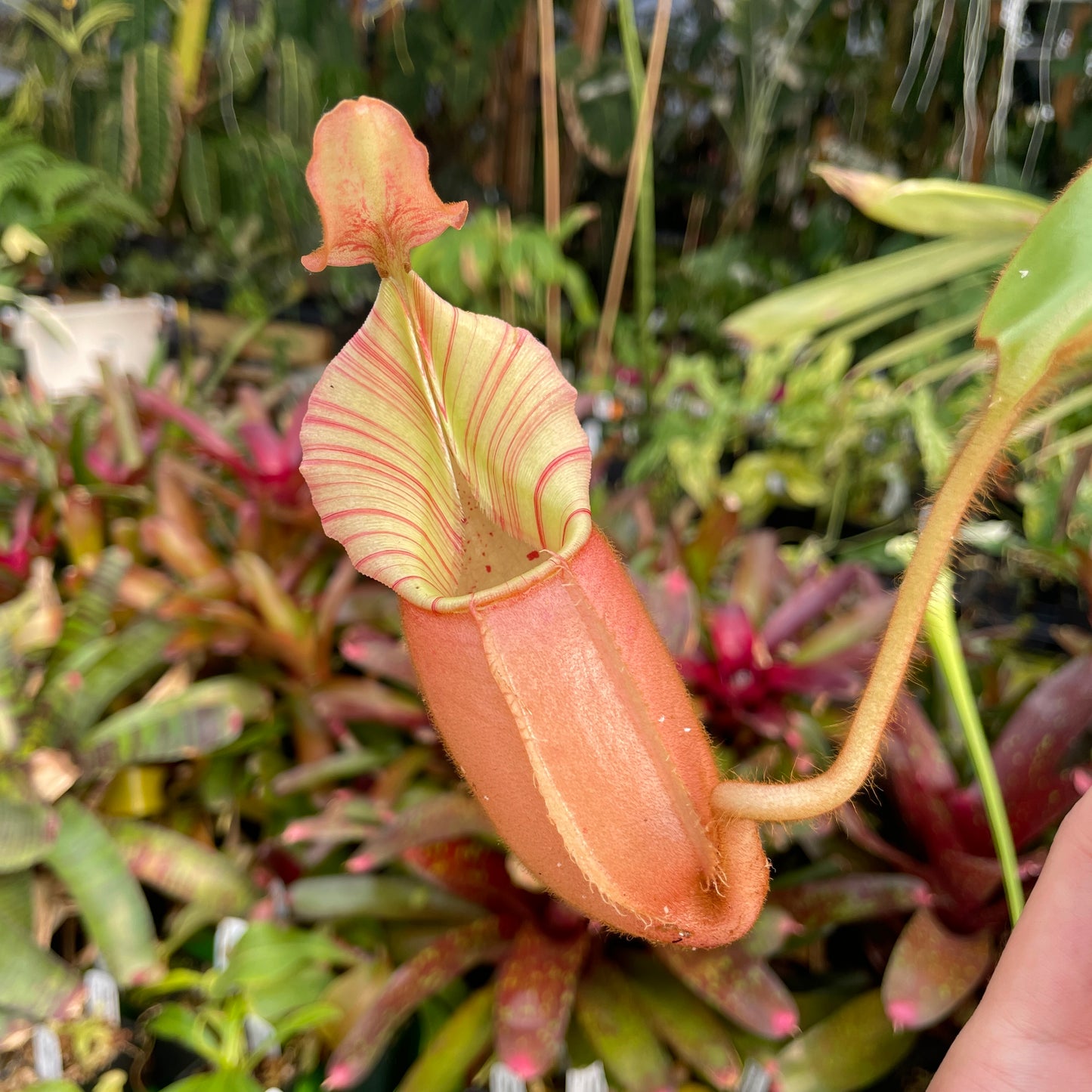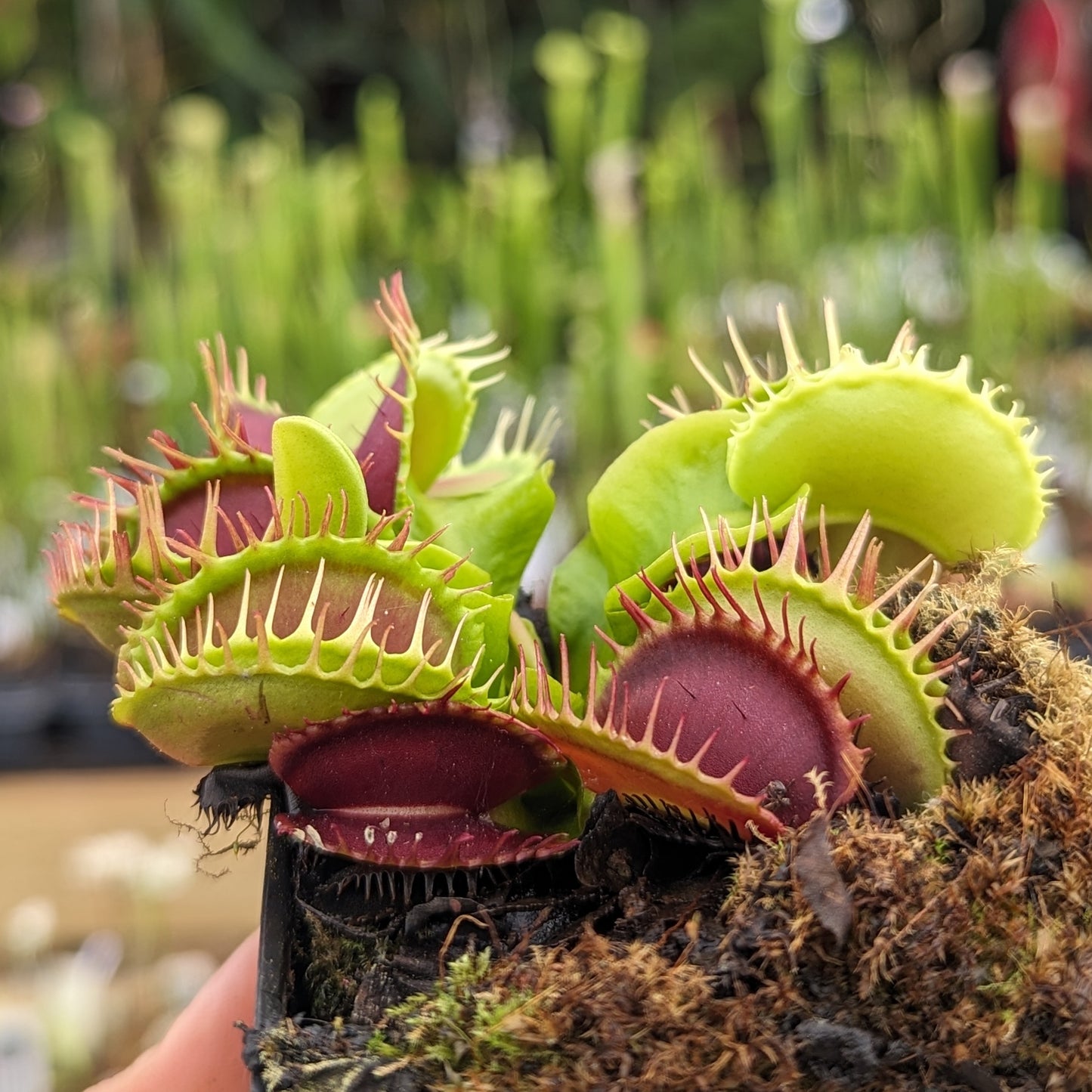Nepenthes rajah, Thomas Alt
This enigmatic species is one of the most famous carnivorous plants. Nepenthes rajah grows on the slopes of Mt. Kinabalu and other neighboring mountains within Kinabalu National Park in Sabah, Malaysia on the island of Borneo. The leaves reach huge size and we’ve observed some to be over 4 feet long. The deep, red pitchers are one of the largest in the genus and have been fabled to eat monkeys and rats. Though it’s uncertain if the pitchers have evolved to perform this function, we do know that they have the perfect shape to be used as toilets to catch the excrement of summit rats which feed from the sugary exudate on the large, vaulted pitcher lids.
The plants offered for sale are the Thomas Alt clone. They have excellent root systems and are established and will be shipped potted. Generally, rajah are slow to get established when young but are steady growers once established. These plants should be grown as highlanders with good humidity though they may be able to tolerate a few months under intermediate conditions if they are already established. Many growers use mineral soils or other additives; however, this isn’t absolutely necessary. Our largest plants are established in sphagnum mixes and the largest ones we’ve seen in cultivation have also been kept this way.
This product is considered a Highland Tropical plant. Please see our Shipping and Guarantees policy for cold/hot weather shipping guidelines.
Most of our products come with multiple shipping options. For those that are unpotted, you can add Pots and Soil or Hanging Baskets a la carte.
| Temp | Day temperatures in the 70s with a drop to the 50s at night. |
| Light | 12-14 hours of bright, indirect light |
| Humidity | High humidity is recommended, but nepenthes can be bag acclimated to ambient household humidity. Check our bag acclimation guide for details. |
| Watering | Water with pure distilled, rain, or reverse osmosis water. We recommend top watering Nepenthes. |
| Temp | Day temperatures in the 70s with a drop to the 50s at night. |
| Light | 12-14 hours of bright, indirect light |
| Humidity | High humidity is recommended, but nepenthes can be bag acclimated to ambient household humidity. Check our bag acclimation guide for details. |
| Watering | Water with pure distilled, rain, or reverse osmosis water. We recommend top watering Nepenthes. |
Extra small (XS) - <2" leafspan
Small - 2"-3" leafspan
Medium - 3"-6" leafspan
Large - 6"-12" leafspan
Extra Large (XL) - >12" leafspan
XXL - Huge plants that are vining and of flowering size
See our sizing guide for more information.
Extra small (XS) - <2" leafspan
Small - 2"-3" leafspan
Medium - 3"-6" leafspan
Large - 6"-12" leafspan
Extra Large (XL) - >12" leafspan
XXL - Huge plants that are vining and of flowering size
See our sizing guide for more information.
All plants have a live arrival guaranteed. More information here.
All plants have a live arrival guaranteed. More information here.
Nepenthes rajah, Thomas Alt
This enigmatic species is one of the most famous carnivorous plants. Nepenthes rajah grows on the slopes of Mt. Kinabalu and other neighboring mountains within Kinabalu National Park in Sabah, Malaysia on the island of Borneo. The leaves reach huge size and we’ve observed some to be over 4 feet long. The deep, red pitchers are one of the largest in the genus and have been fabled to eat monkeys and rats. Though it’s uncertain if the pitchers have evolved to perform this function, we do know that they have the perfect shape to be used as toilets to catch the excrement of summit rats which feed from the sugary exudate on the large, vaulted pitcher lids.
The plants offered for sale are the Thomas Alt clone. They have excellent root systems and are established and will be shipped potted. Generally, rajah are slow to get established when young but are steady growers once established. These plants should be grown as highlanders with good humidity though they may be able to tolerate a few months under intermediate conditions if they are already established. Many growers use mineral soils or other additives; however, this isn’t absolutely necessary. Our largest plants are established in sphagnum mixes and the largest ones we’ve seen in cultivation have also been kept this way.
This product is considered a Highland Tropical plant. Please see our Shipping and Guarantees policy for cold/hot weather shipping guidelines.
Most of our products come with multiple shipping options. For those that are unpotted, you can add Pots and Soil or Hanging Baskets a la carte.
| Temp | Day temperatures in the 70s with a drop to the 50s at night. |
| Light | 12-14 hours of bright, indirect light |
| Humidity | High humidity is recommended, but nepenthes can be bag acclimated to ambient household humidity. Check our bag acclimation guide for details. |
| Watering | Water with pure distilled, rain, or reverse osmosis water. We recommend top watering Nepenthes. |
| Temp | Day temperatures in the 70s with a drop to the 50s at night. |
| Light | 12-14 hours of bright, indirect light |
| Humidity | High humidity is recommended, but nepenthes can be bag acclimated to ambient household humidity. Check our bag acclimation guide for details. |
| Watering | Water with pure distilled, rain, or reverse osmosis water. We recommend top watering Nepenthes. |
Extra small (XS) - <2" leafspan
Small - 2"-3" leafspan
Medium - 3"-6" leafspan
Large - 6"-12" leafspan
Extra Large (XL) - >12" leafspan
XXL - Huge plants that are vining and of flowering size
See our sizing guide for more information.
Extra small (XS) - <2" leafspan
Small - 2"-3" leafspan
Medium - 3"-6" leafspan
Large - 6"-12" leafspan
Extra Large (XL) - >12" leafspan
XXL - Huge plants that are vining and of flowering size
See our sizing guide for more information.
All plants have a live arrival guaranteed. More information here.
All plants have a live arrival guaranteed. More information here.

